Situated within the very heart of Kreuzberg 36, Mariannenplatz has been somewhat of a leftist pilgrimage destination. The former Bethanien hospital not only became part of German pop history as the Georg-von-Rauch-Haus, but also stands as an exemplary memorial for the Berlin’s societal upheaval after 1968.
Today the area between Moritzplatz, Görlitzer Bahnhof, and Landwehrkanal attracts a diverse population of people from all around the world, who want to participate in shaping their own future environment. Graphic designer and professor Fons Hickmann is no exception. Fons lives and works inside a red brick building at Mariannenplatz with an eclectic mix of neighbors that include his agency ‘Fons Hickmann M23’.
Before moving in twelve years ago, the building housed a Turkish mosque. Shortly after moving in, the prayer rugs were replaced with his children’s hamster cage. The lower floor was turned into the agency where Fons’ unique conceptual perspective to design, based on his academic background in literature and philosophy, helped develop its strong reputation. It is not all work, however; as and importance is placed on both professional duties and a healthy dose of competitive ping-pong. This highly regarded designer is also one of the most likeable.
This portrait is part of our ongoing collaboration with FormFiftyFive who present a special curation of our pictures on their site here.
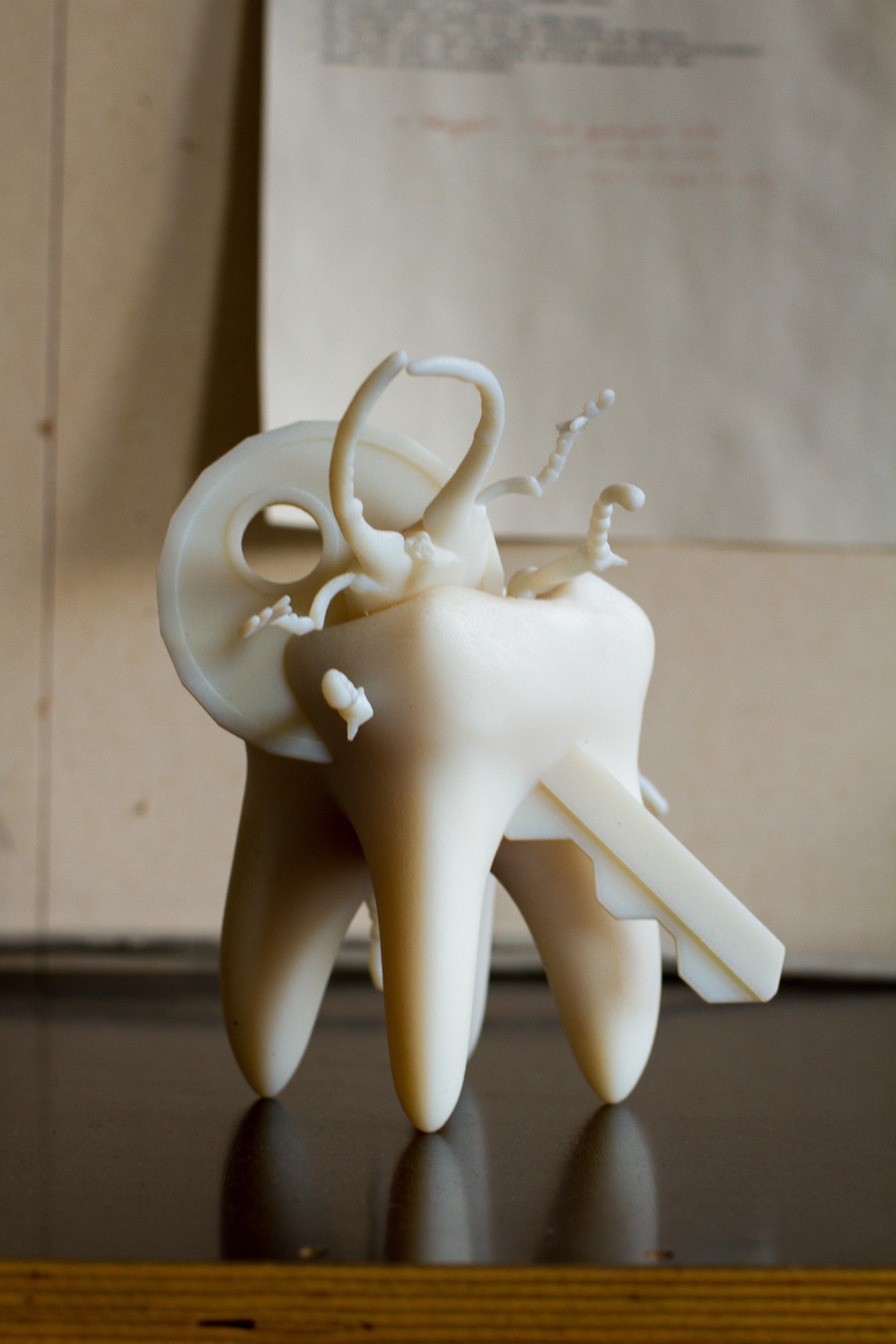
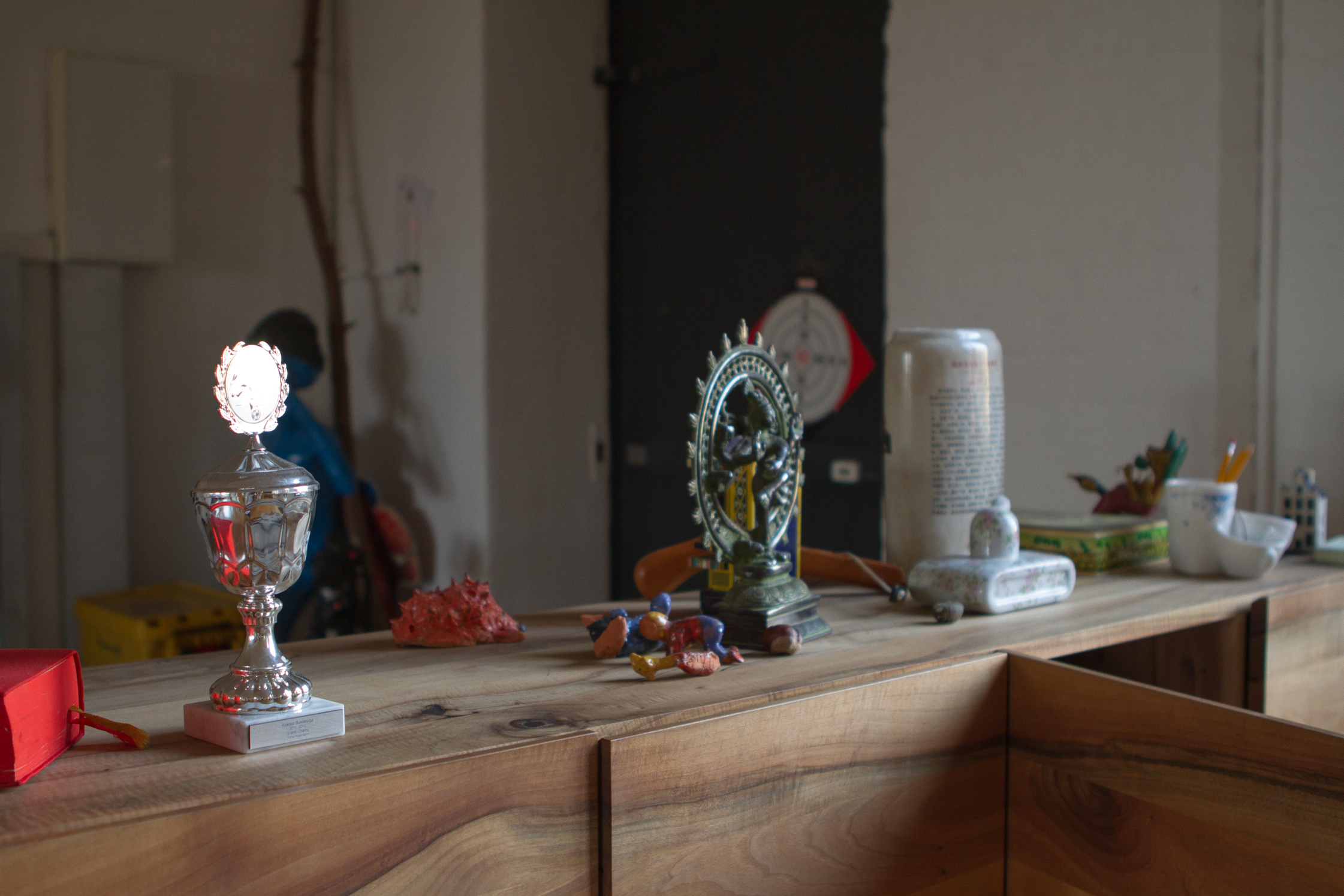
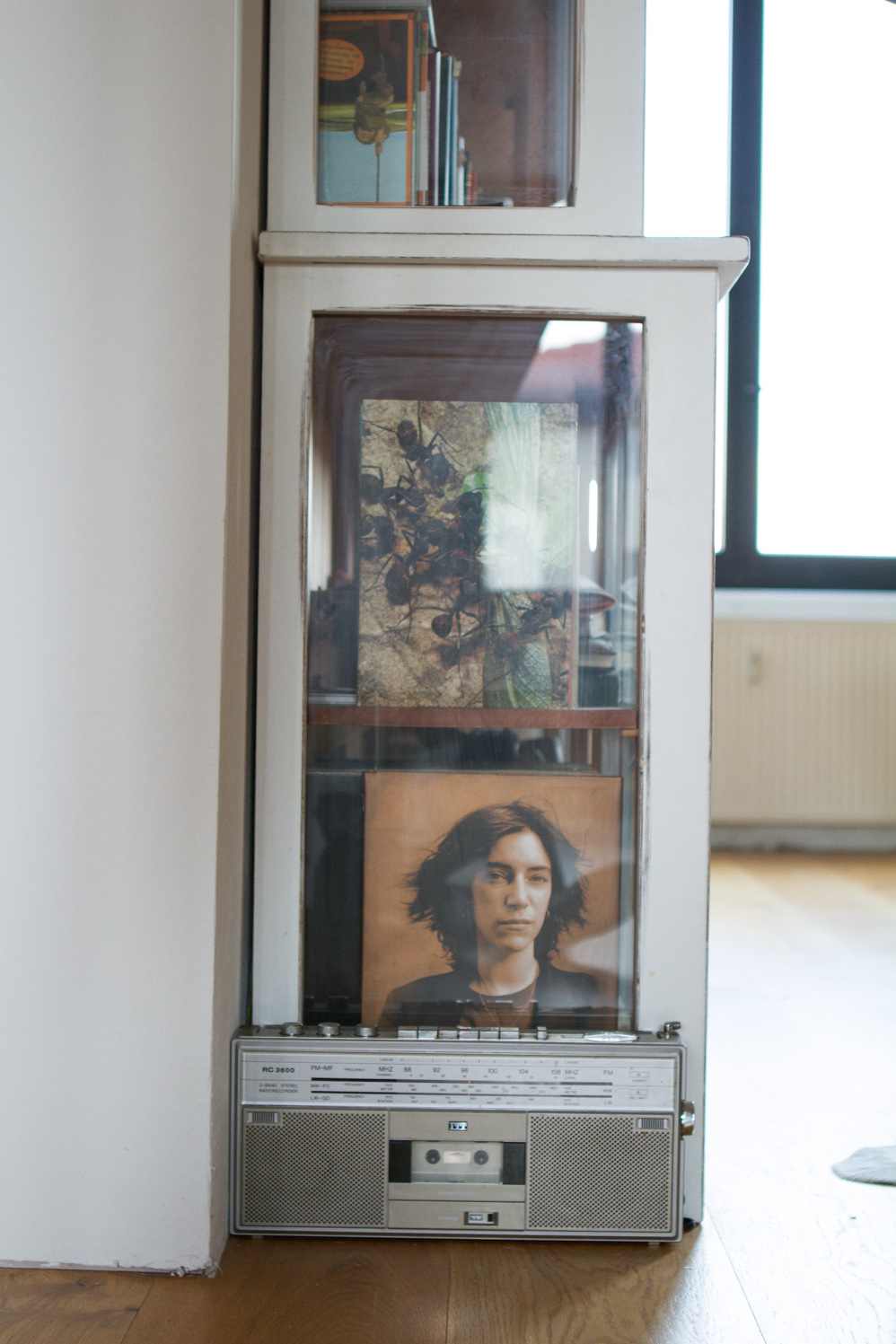
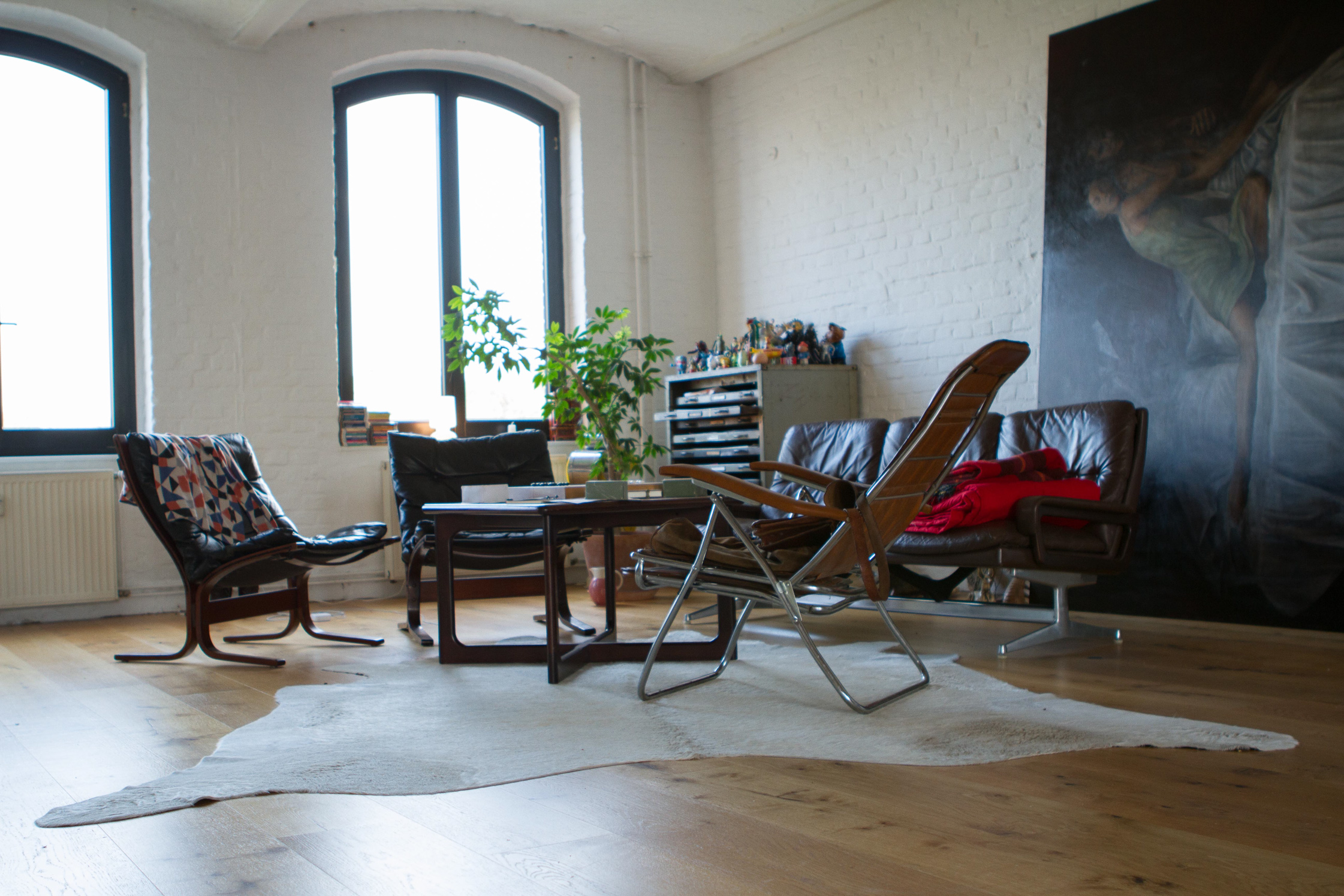
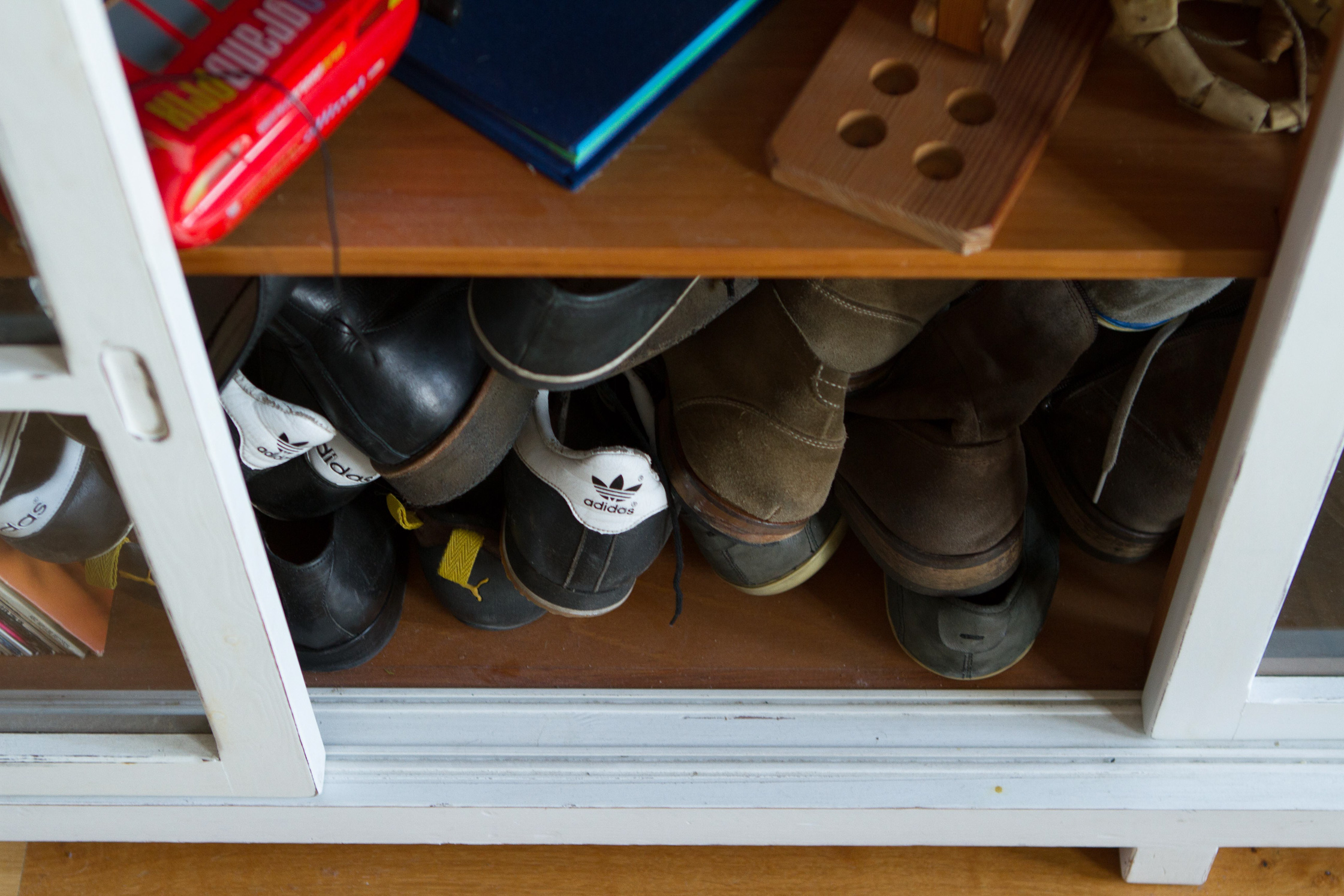
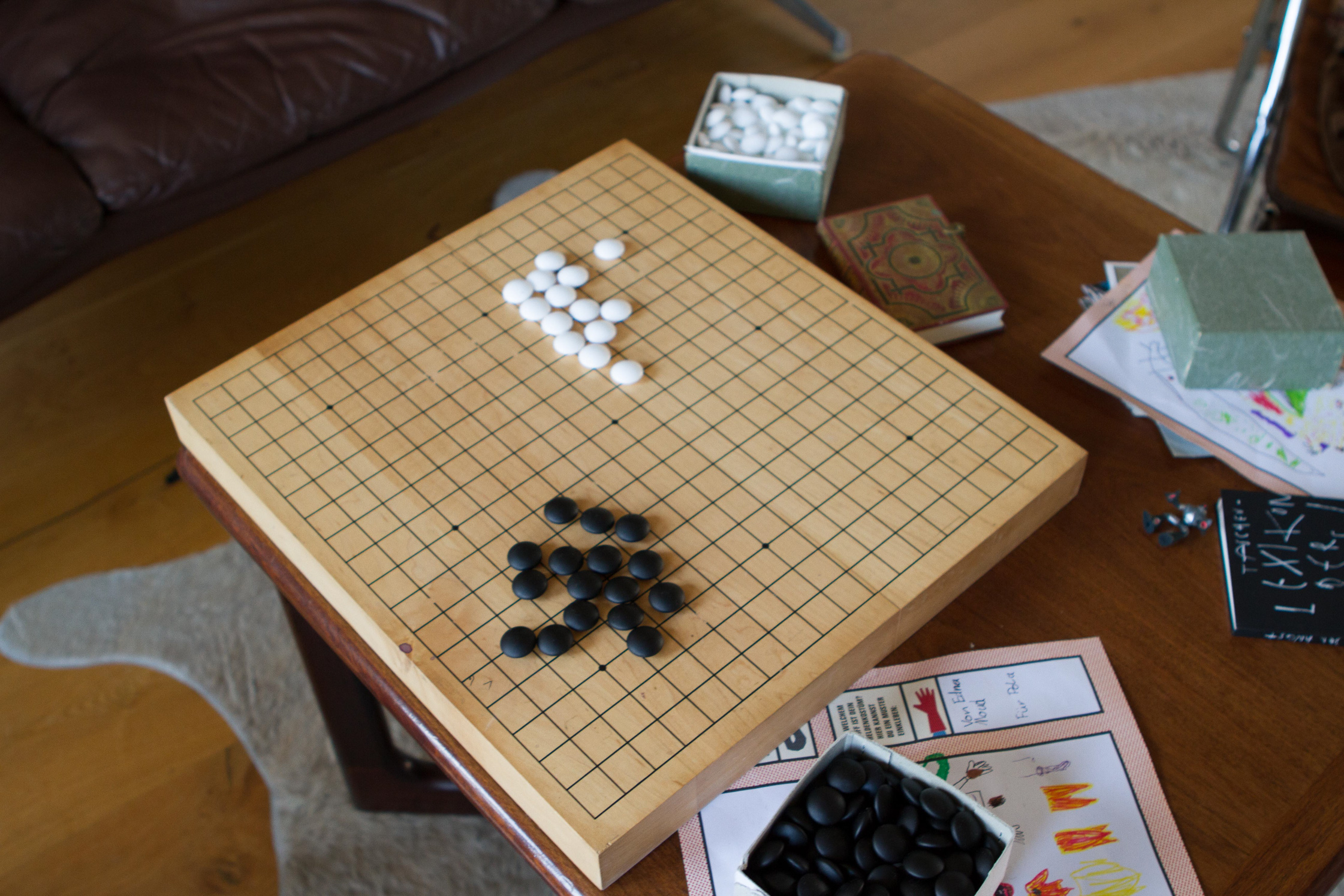
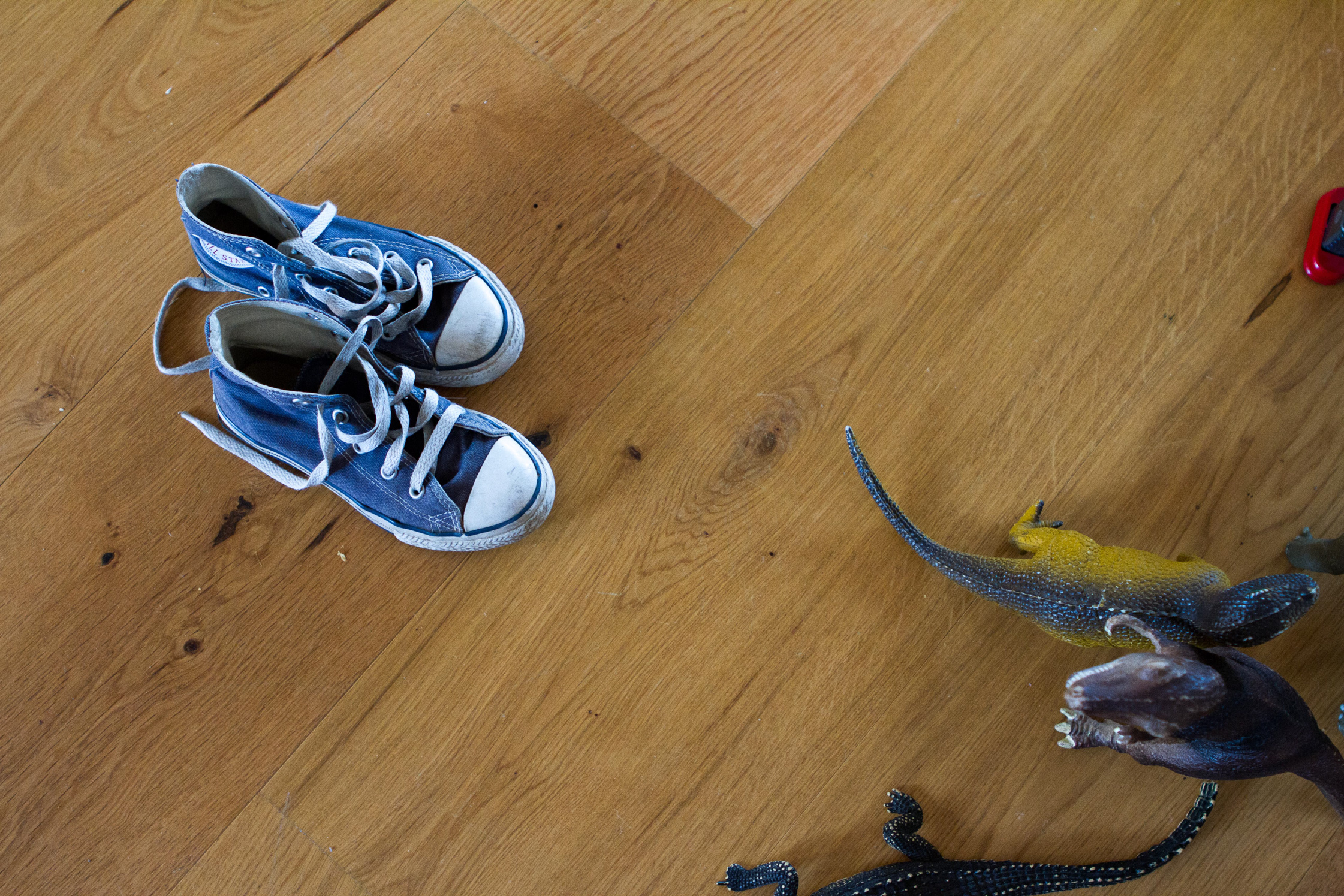
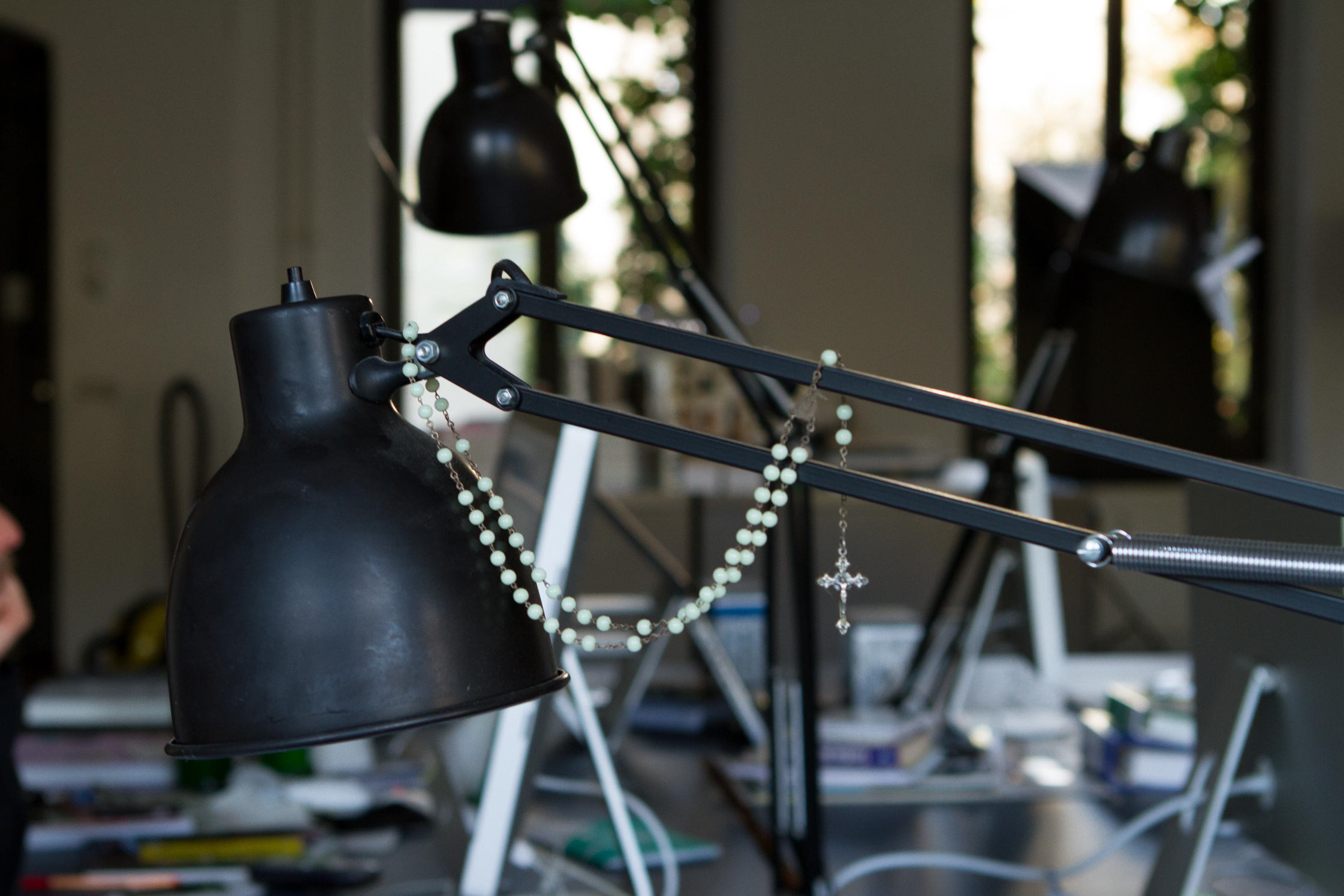
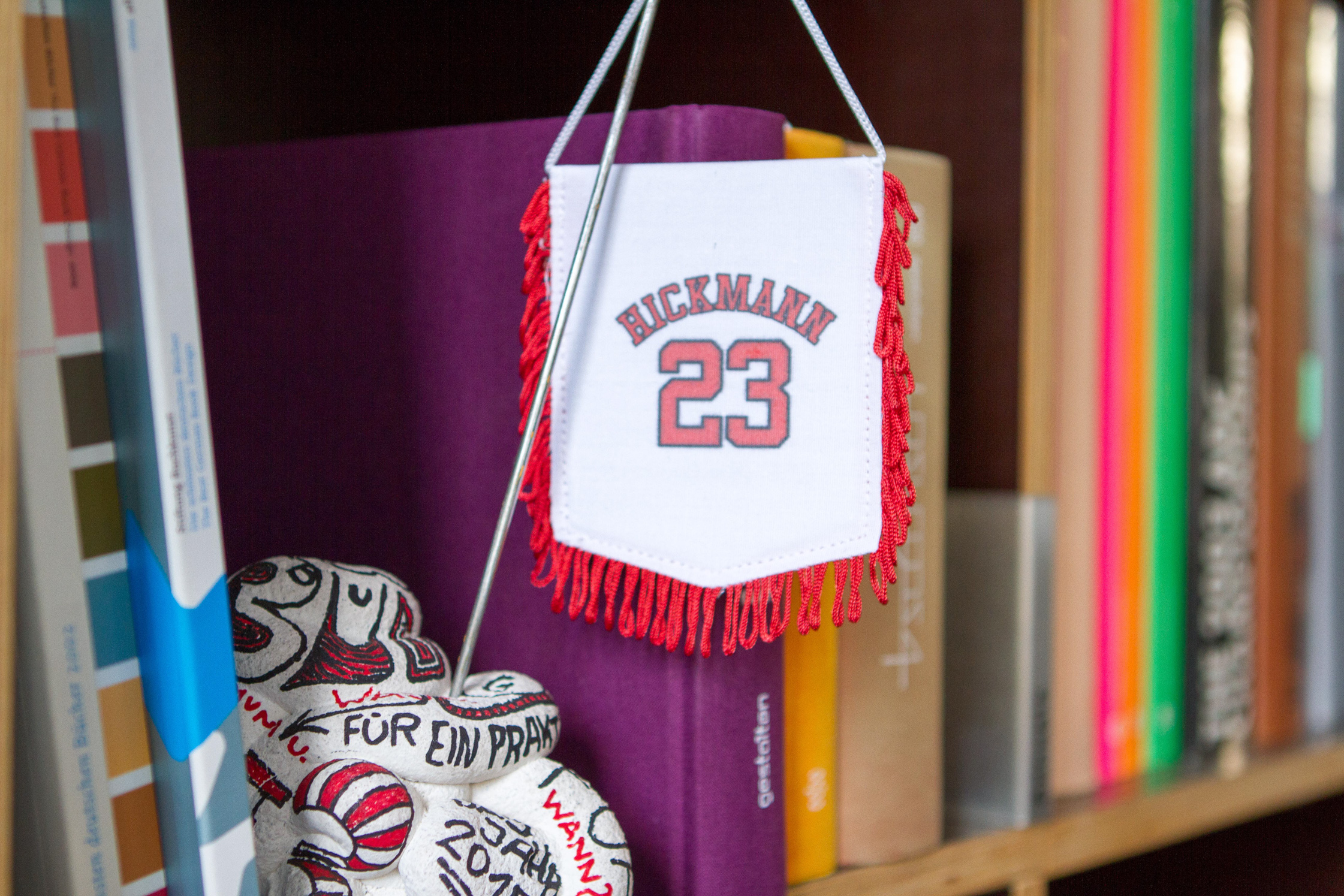
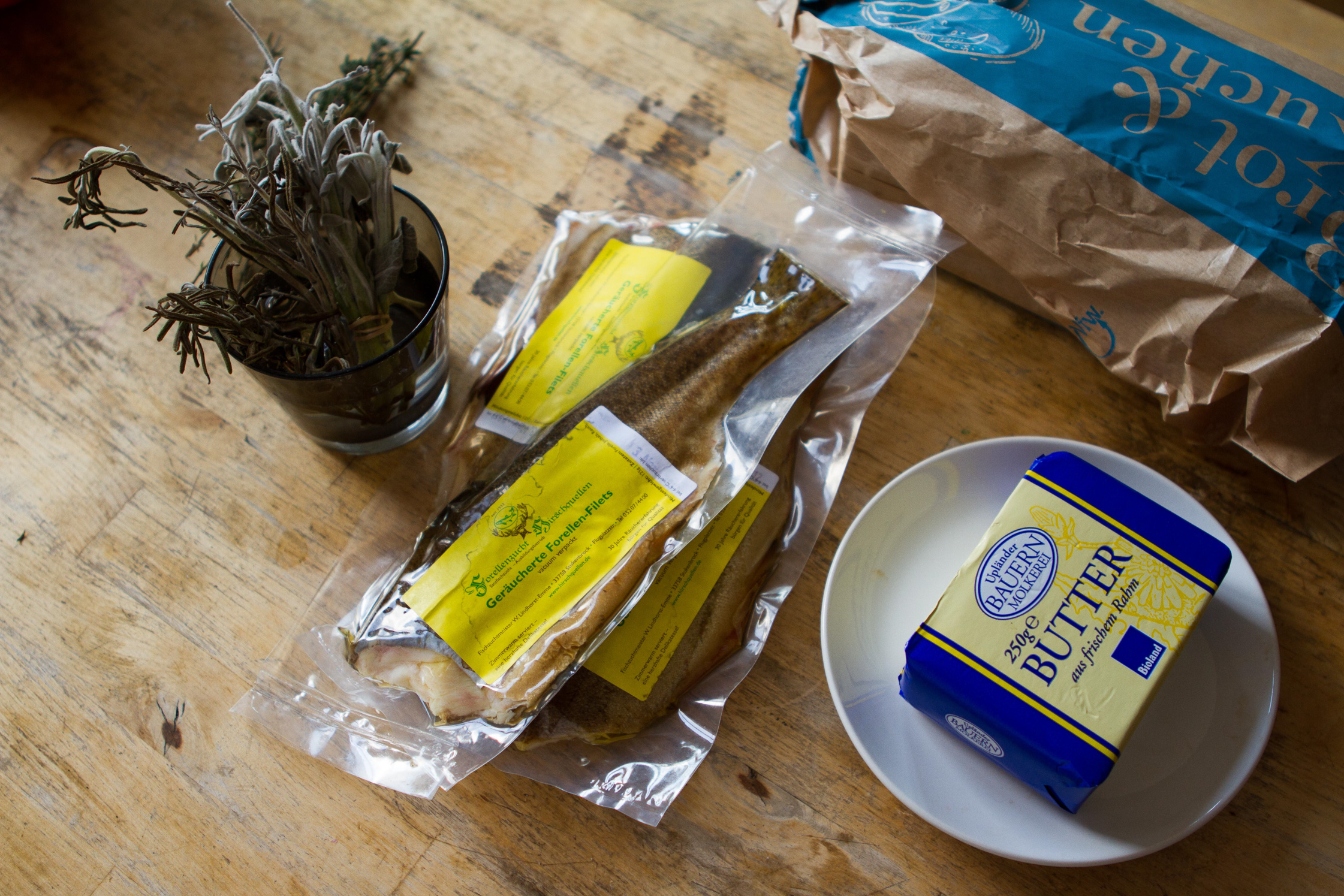
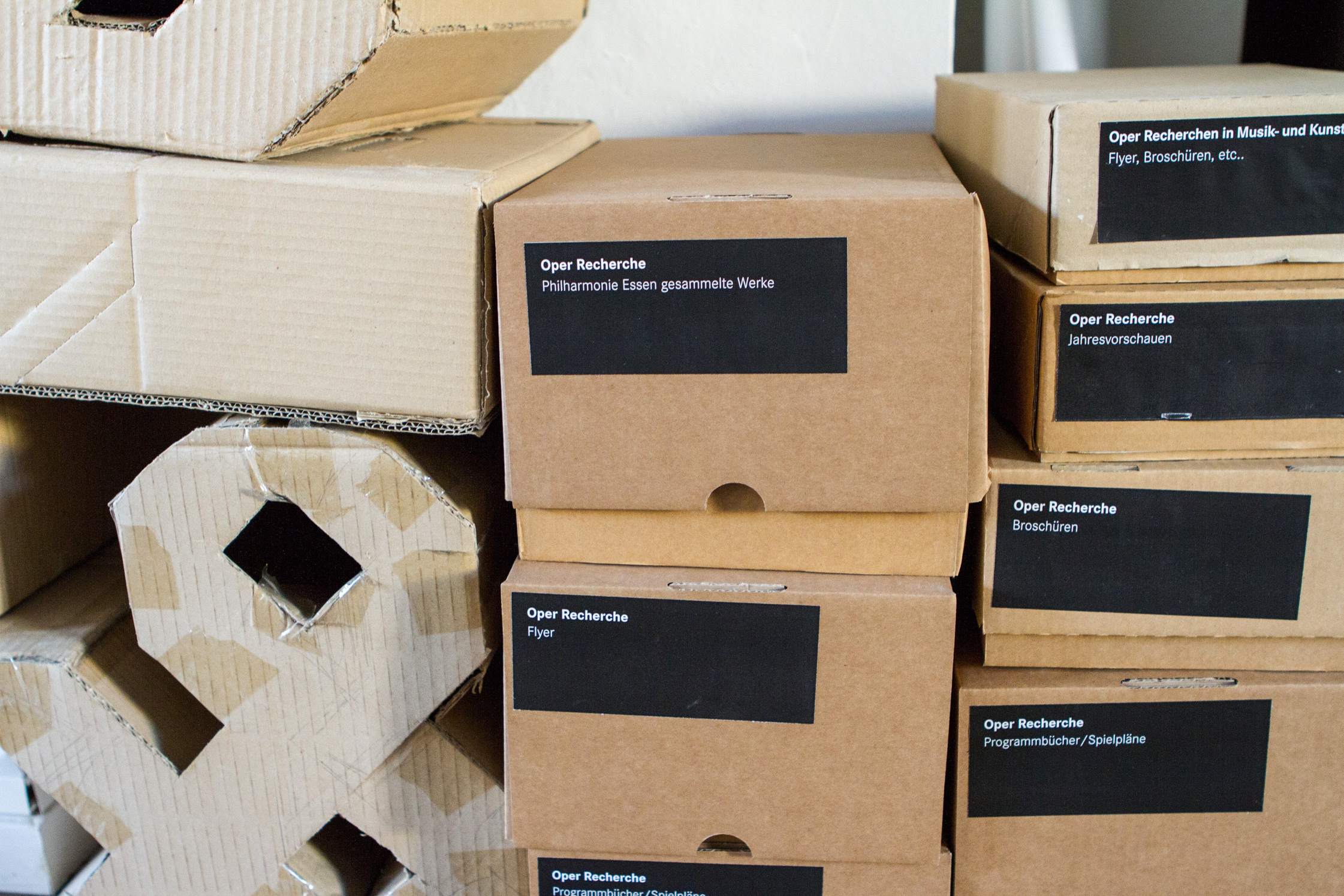
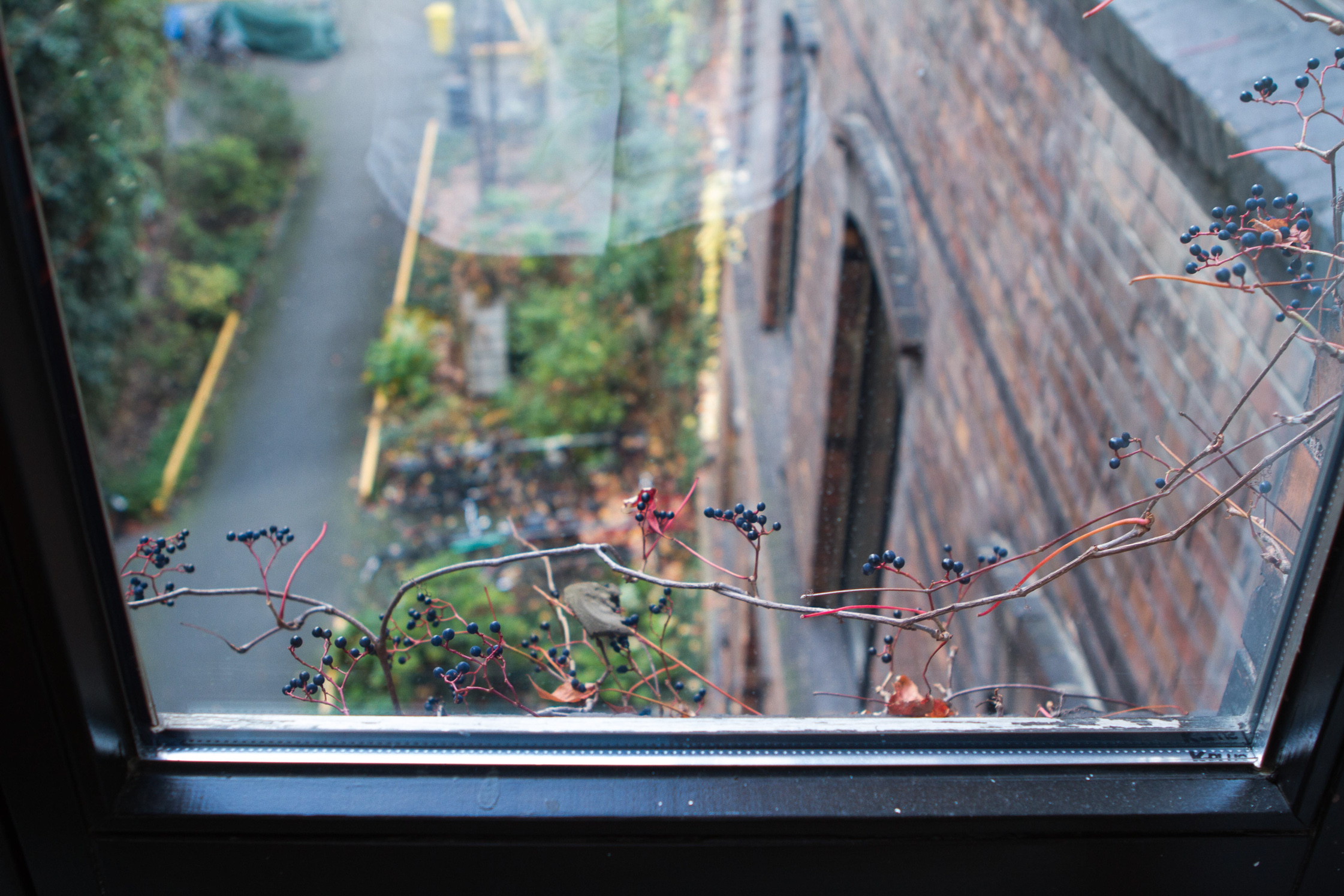
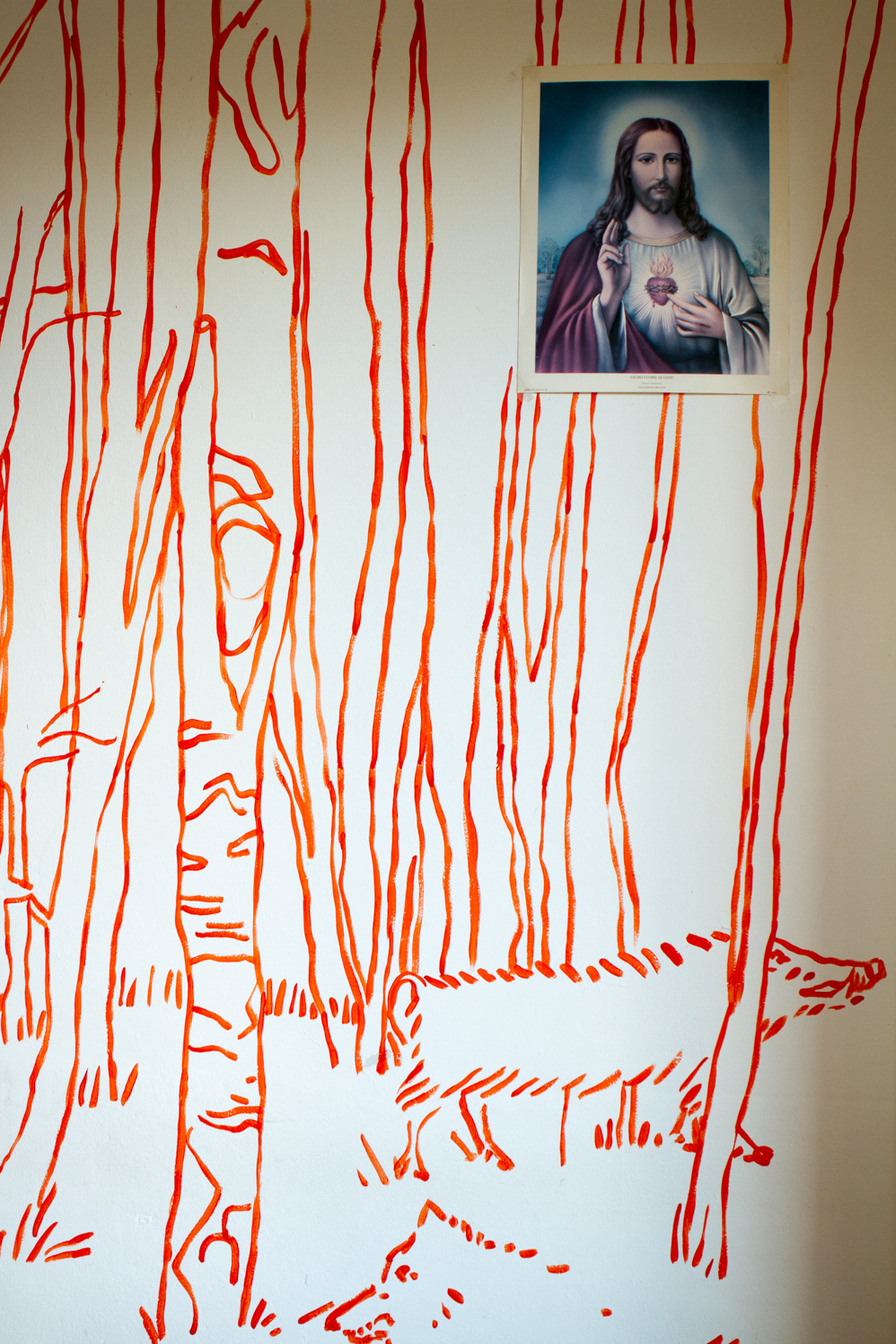
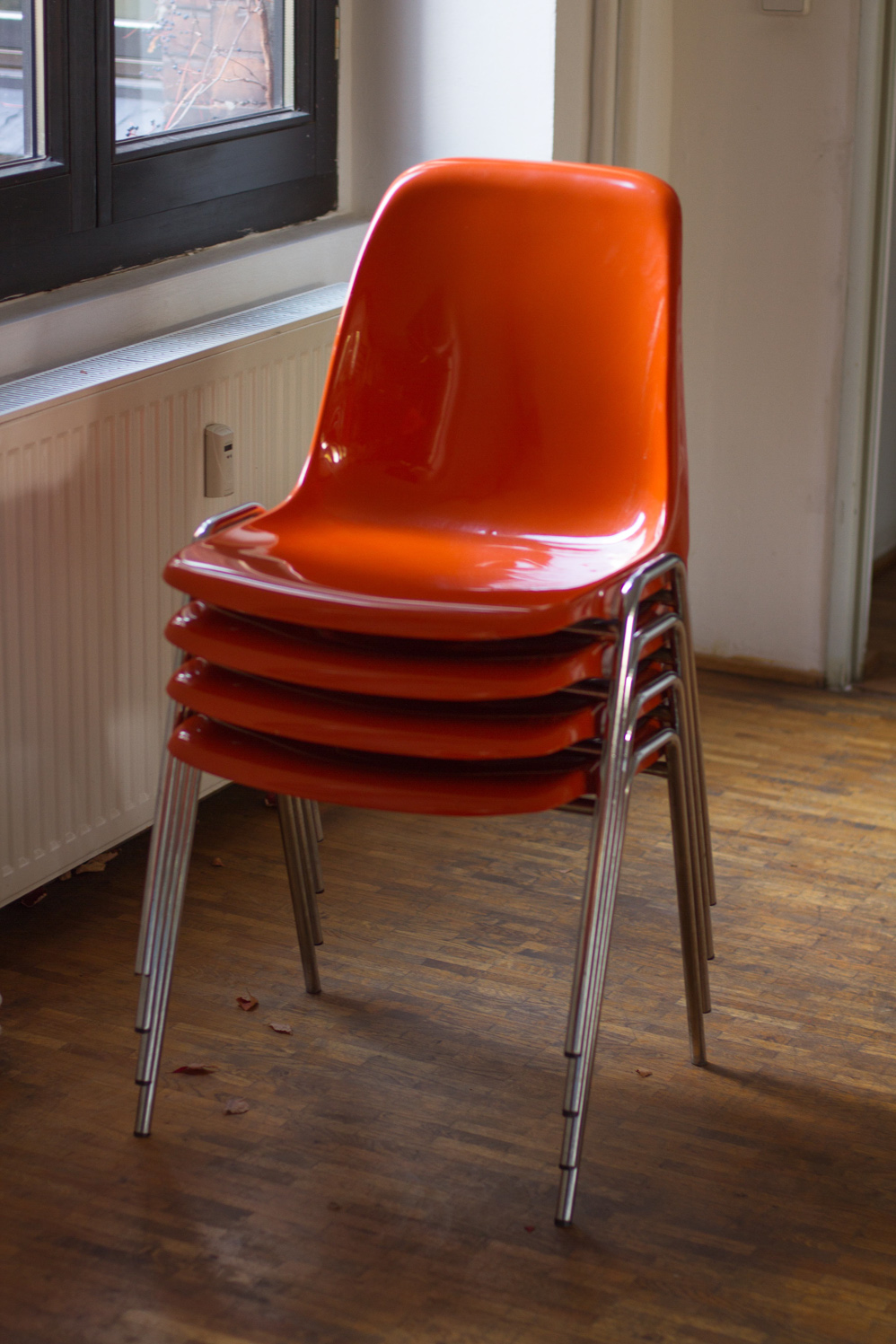
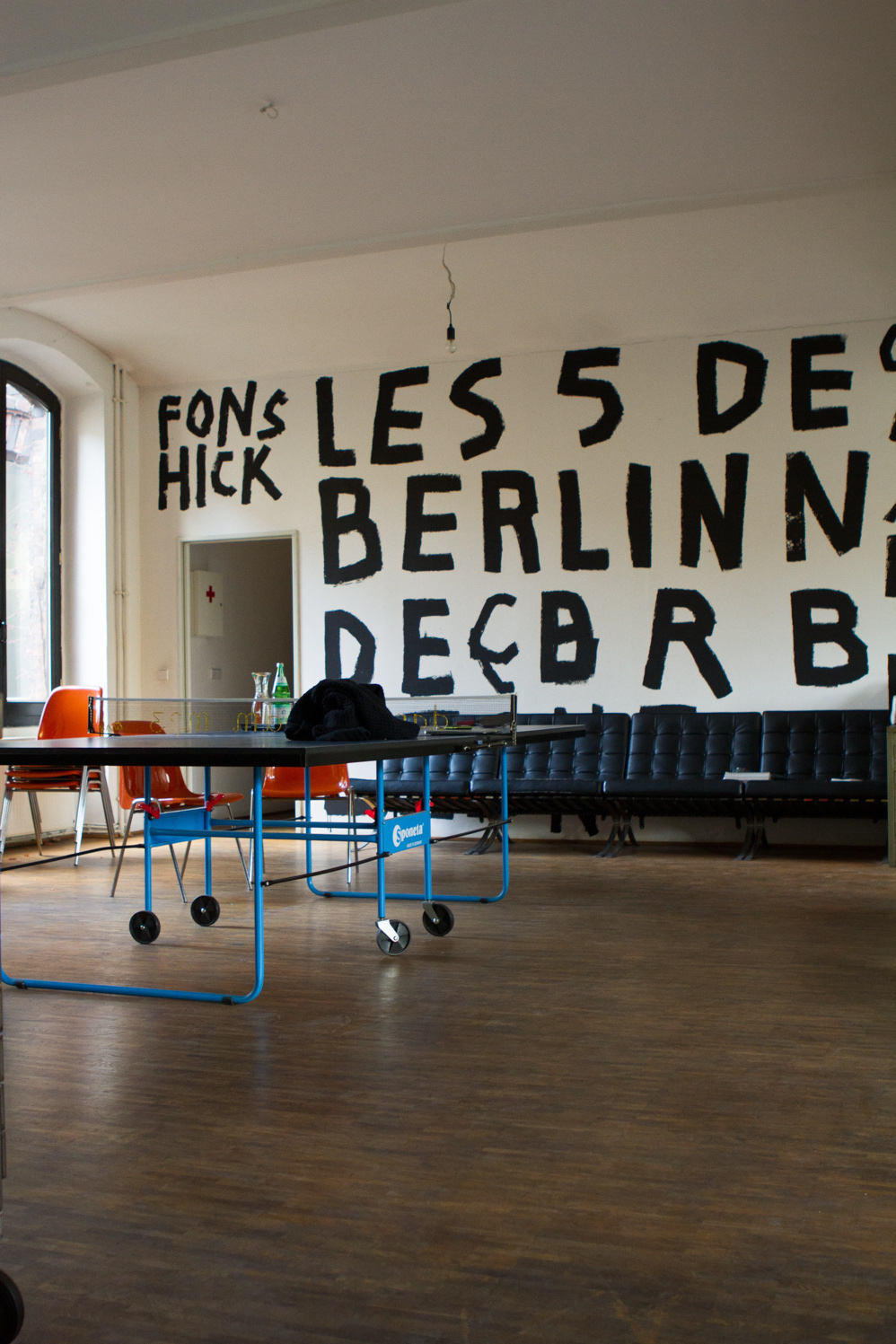
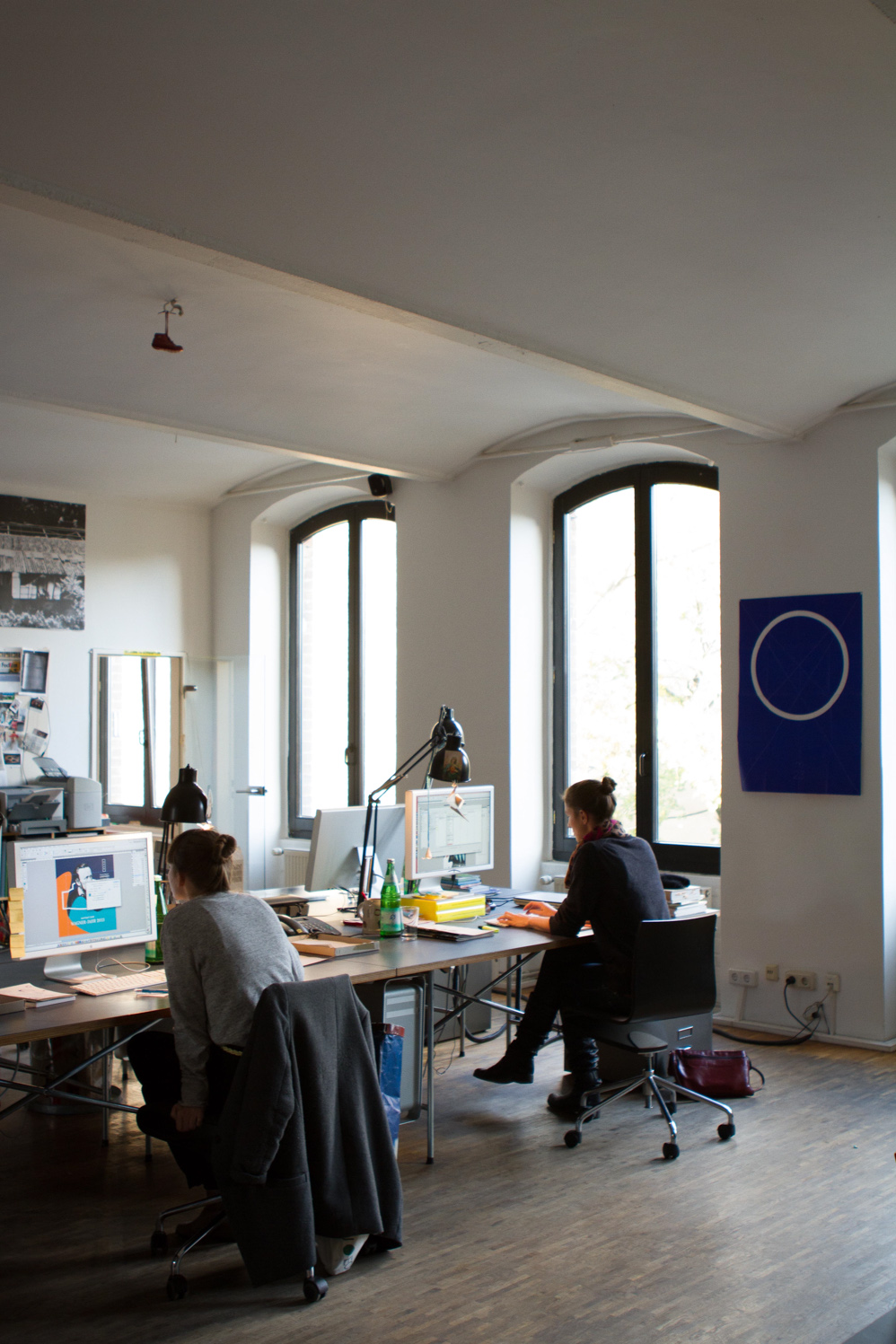
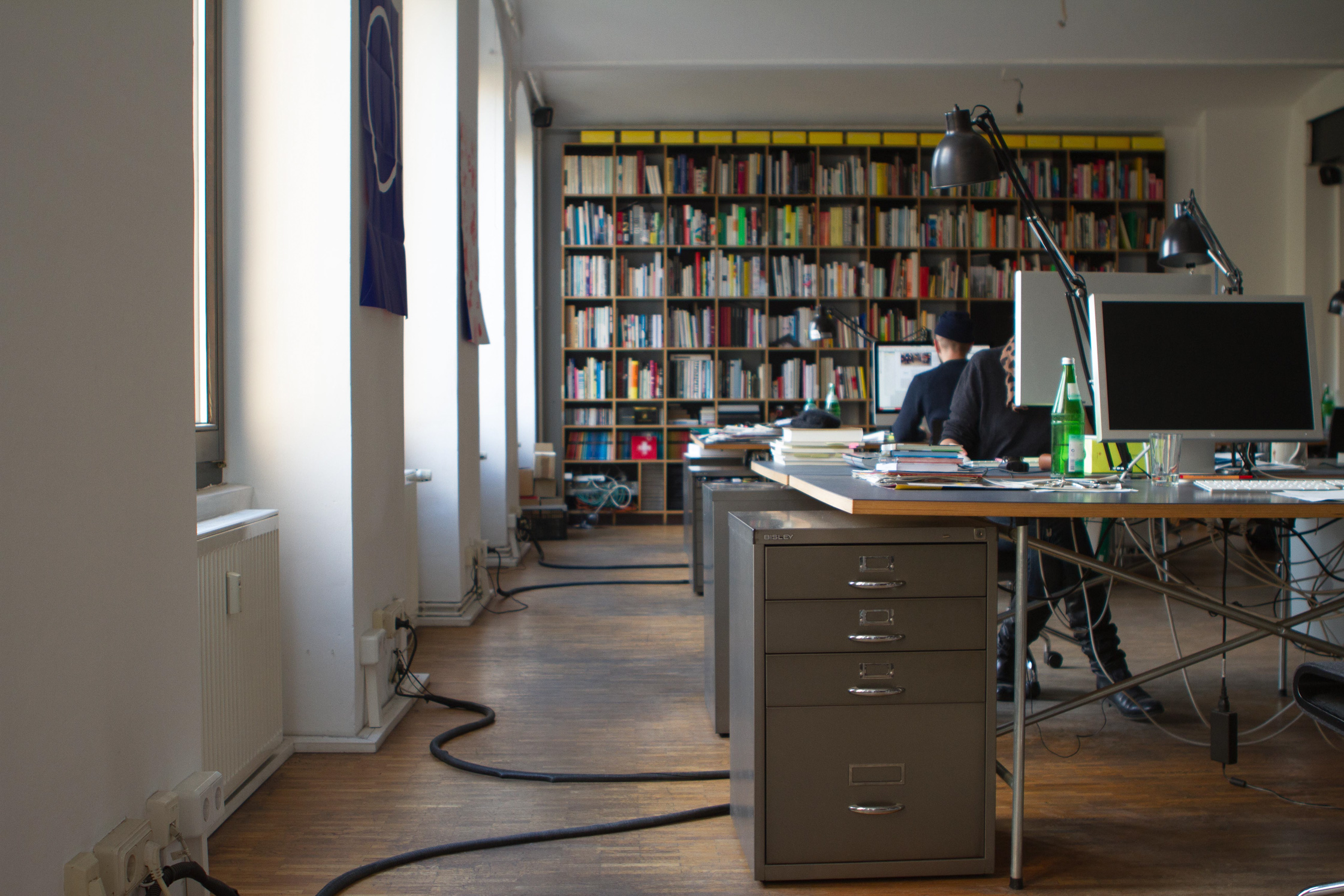
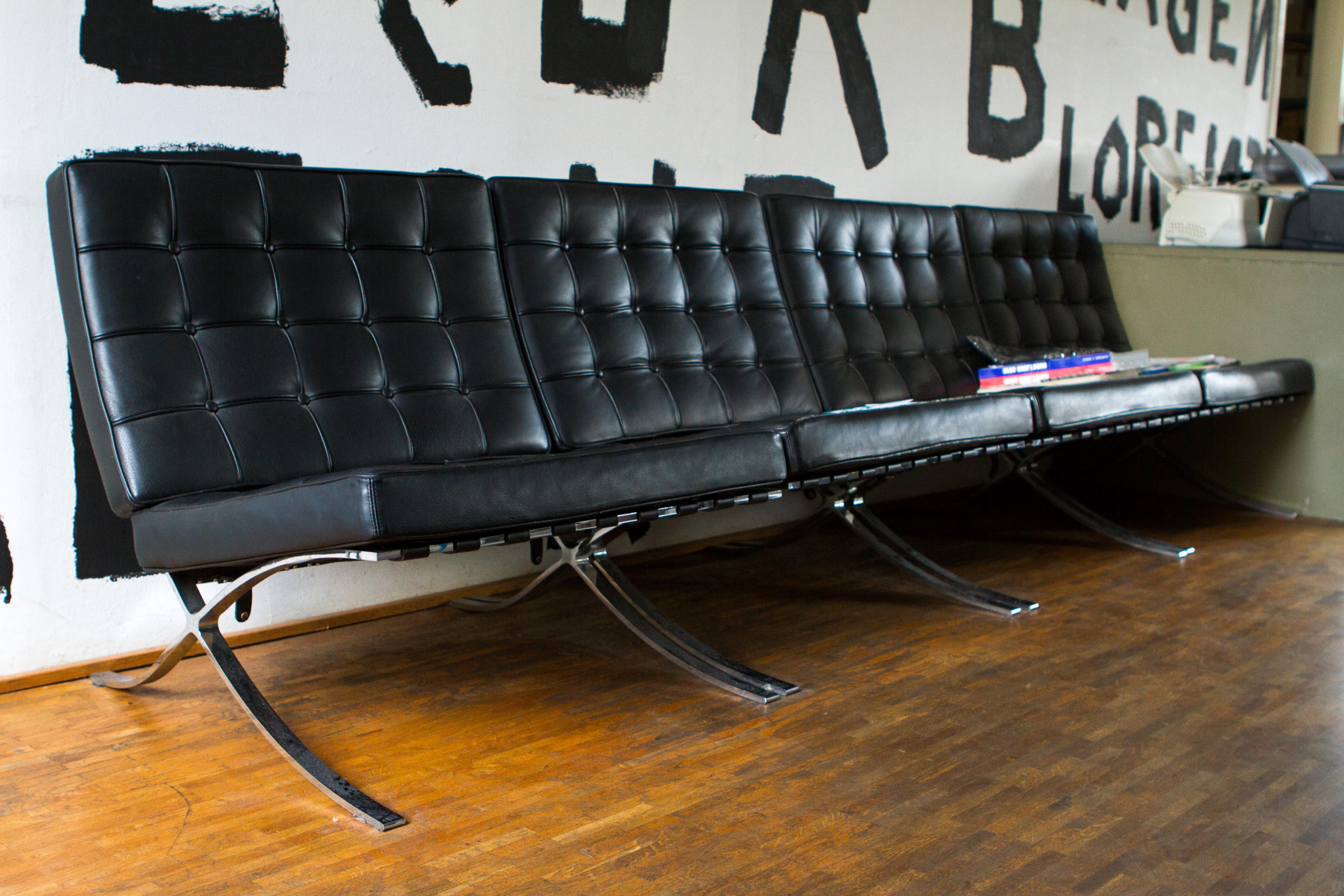
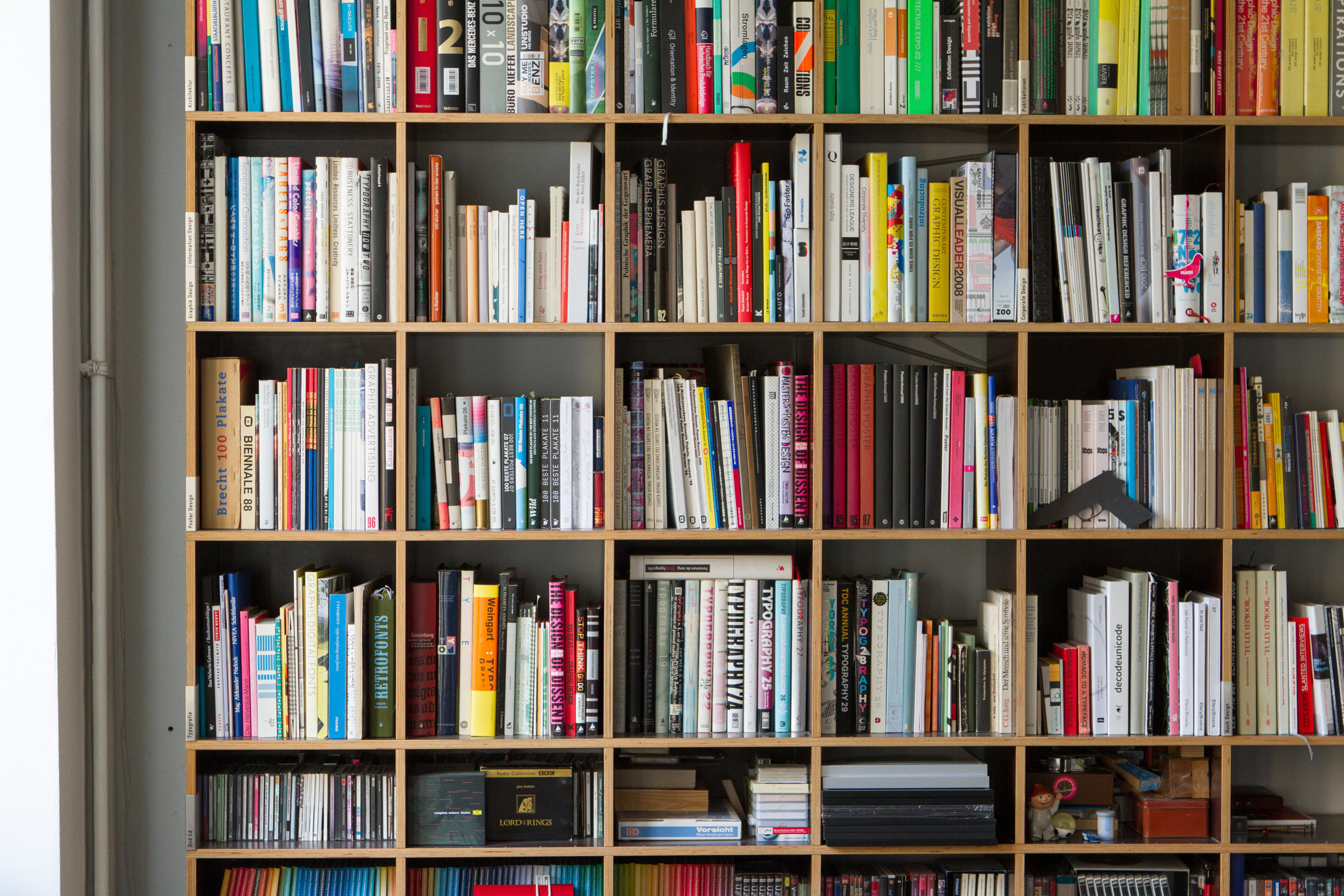
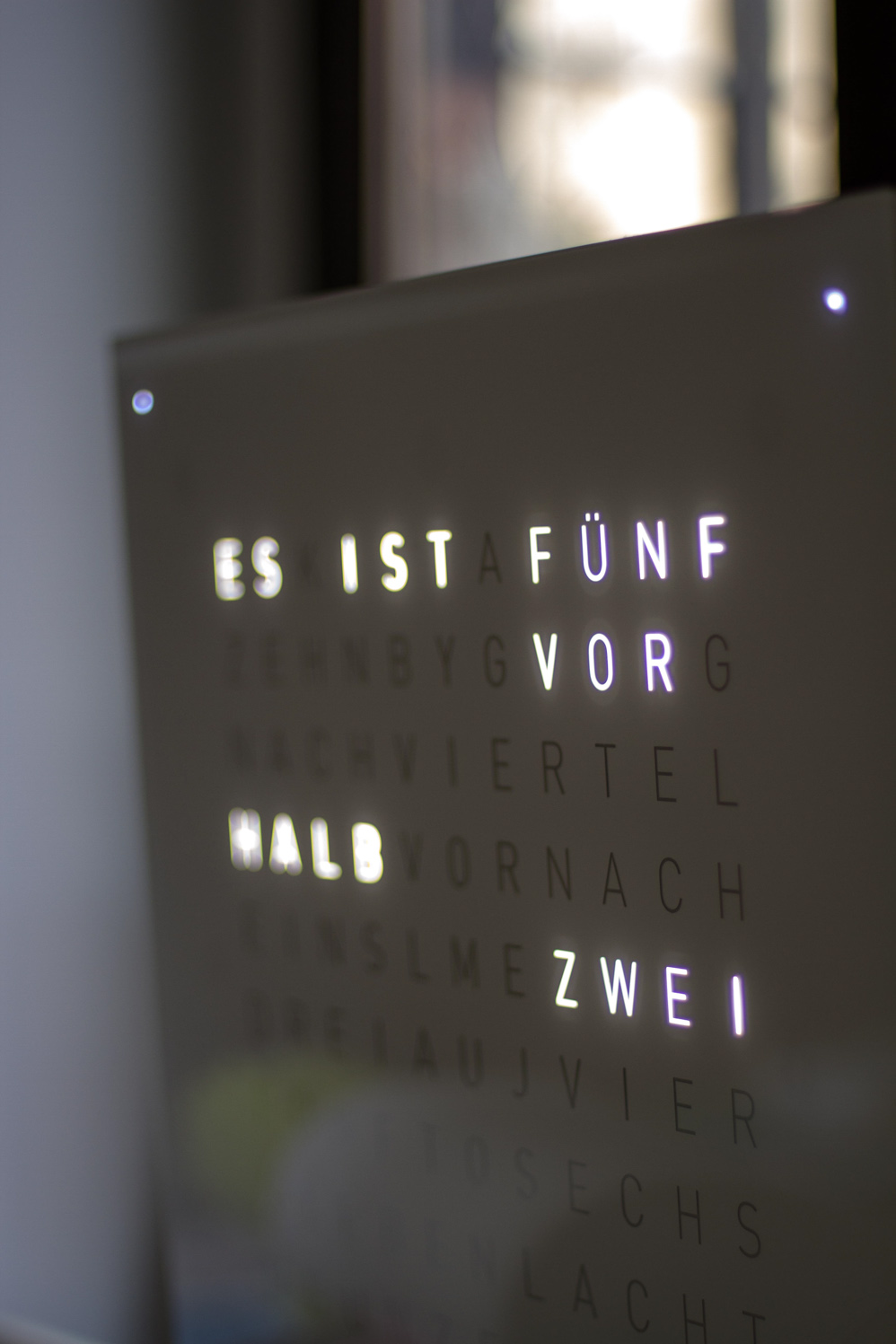
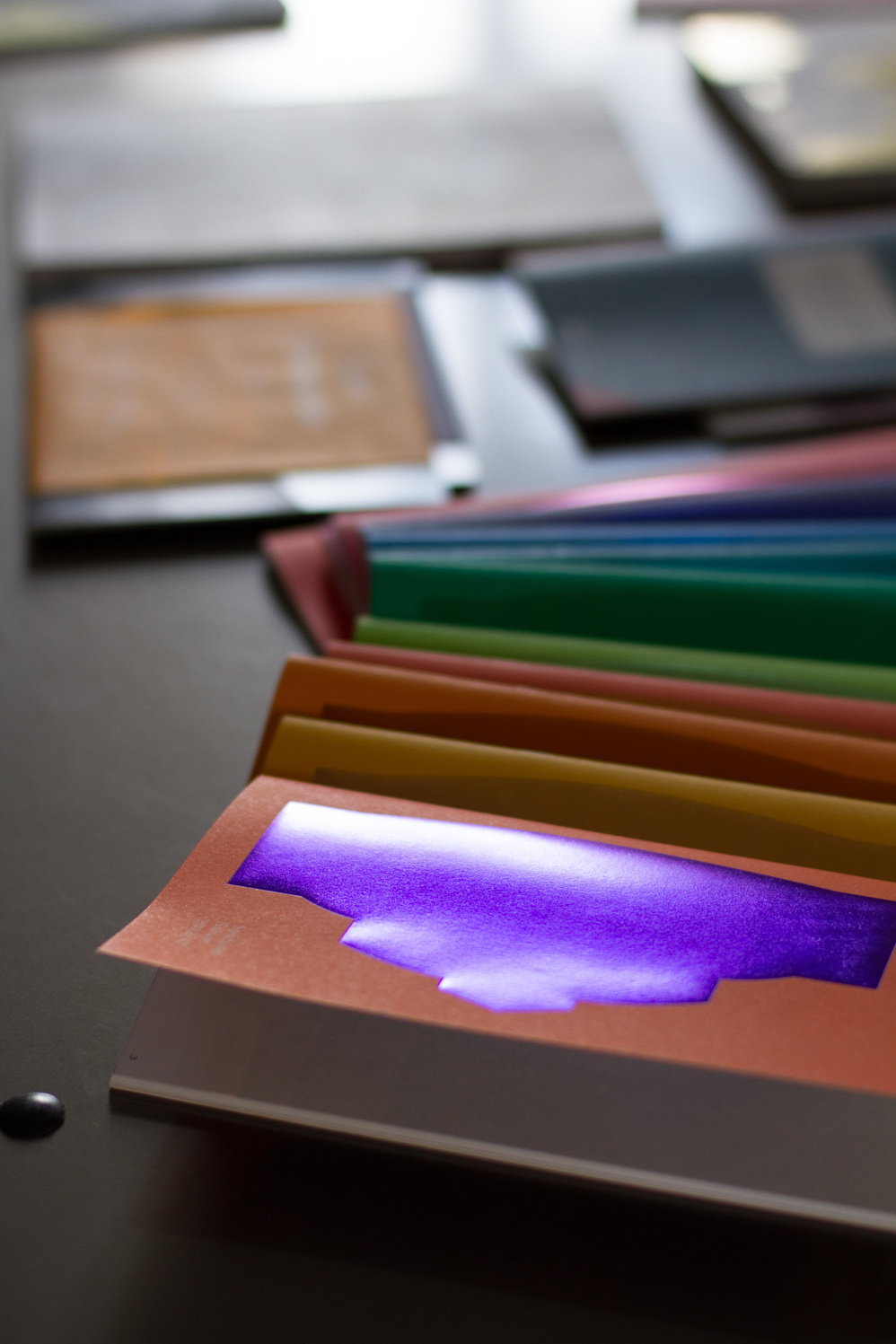
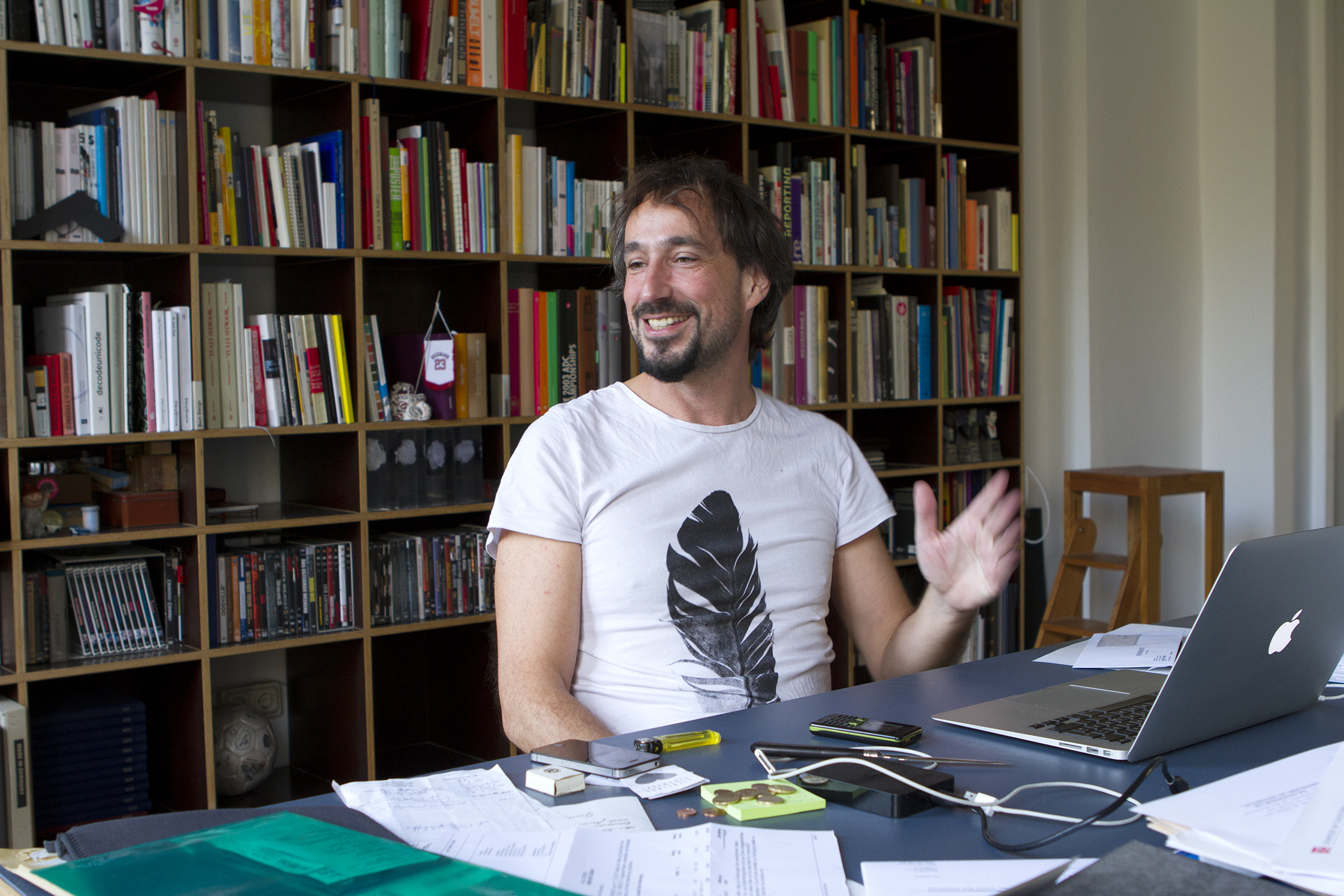
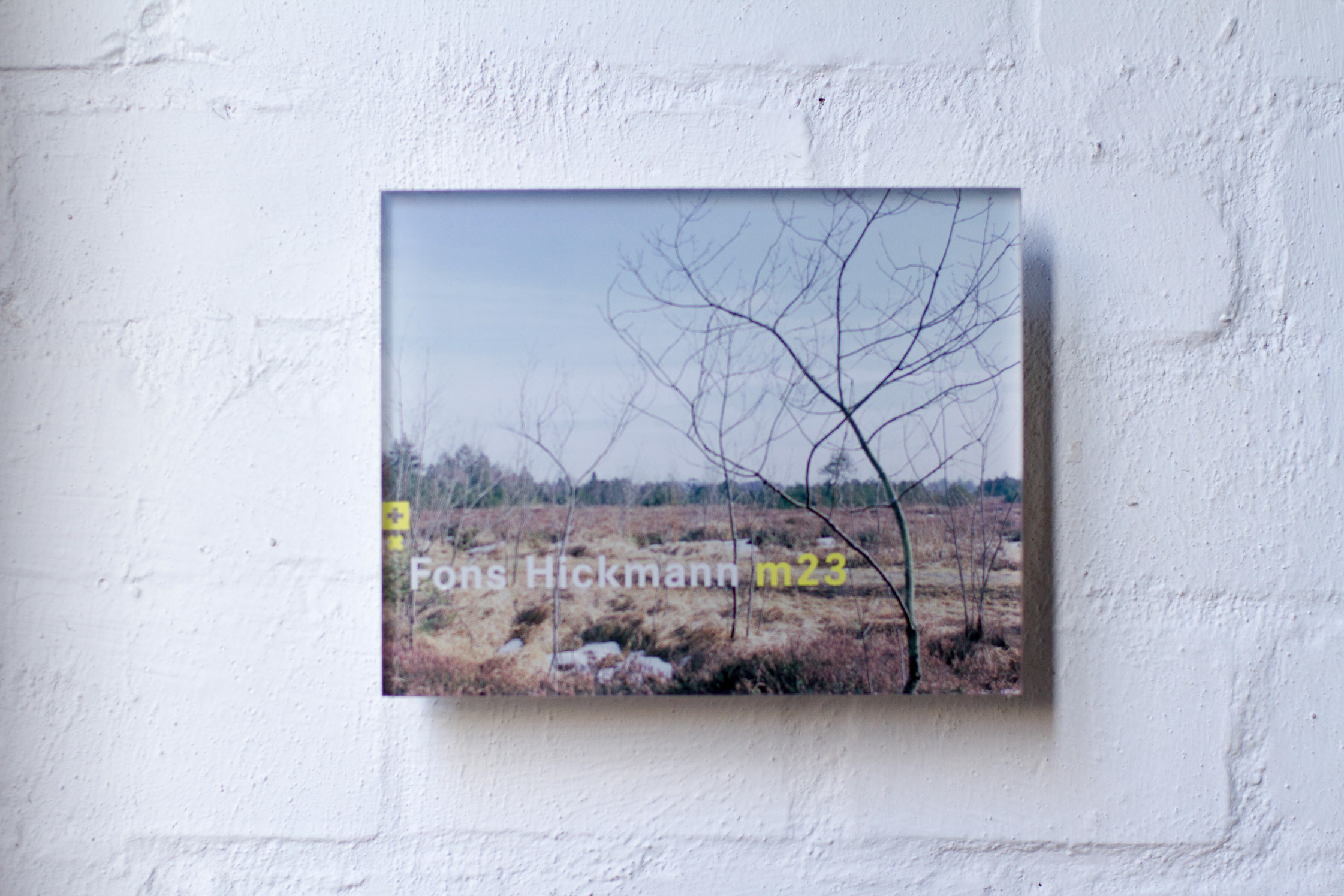
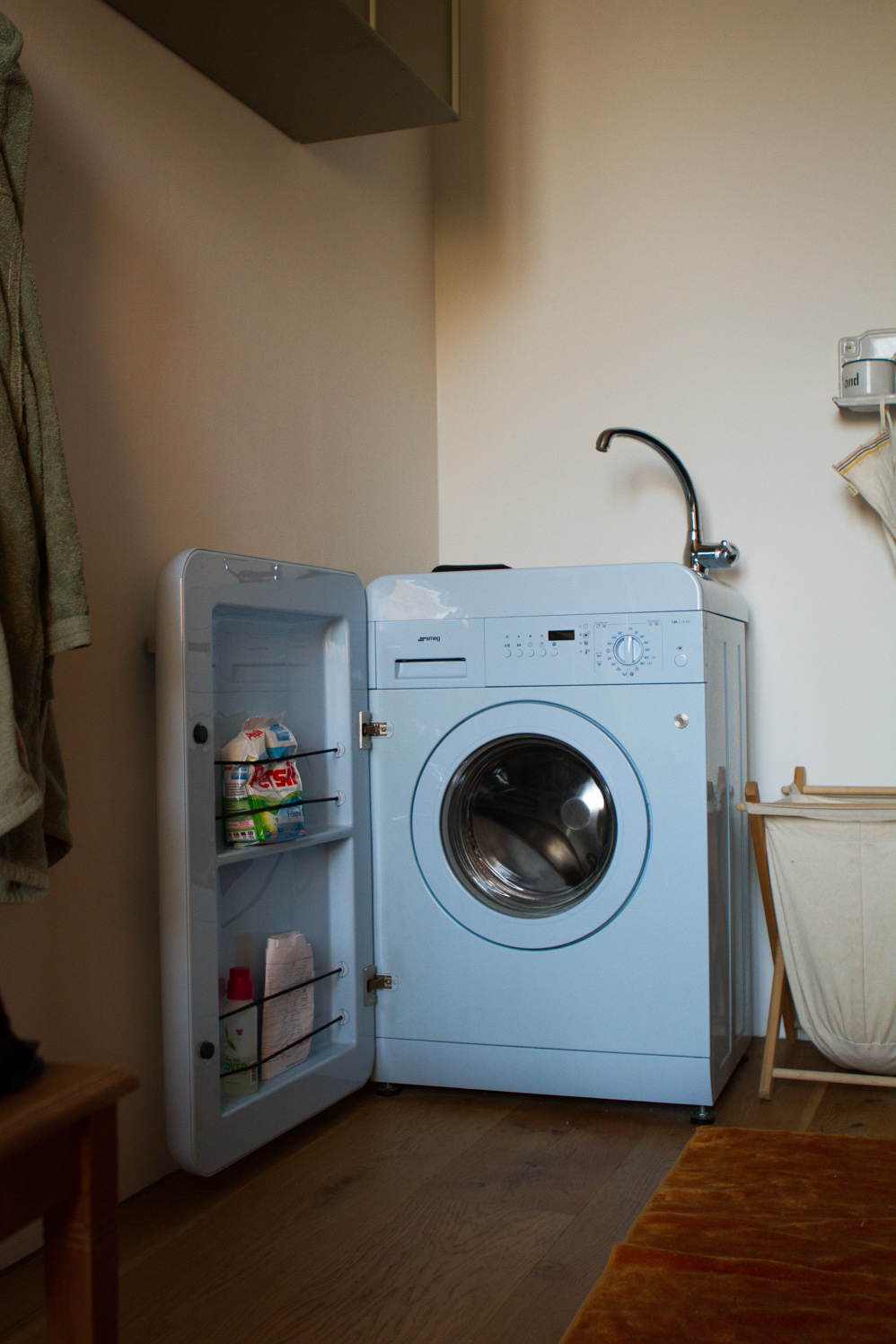
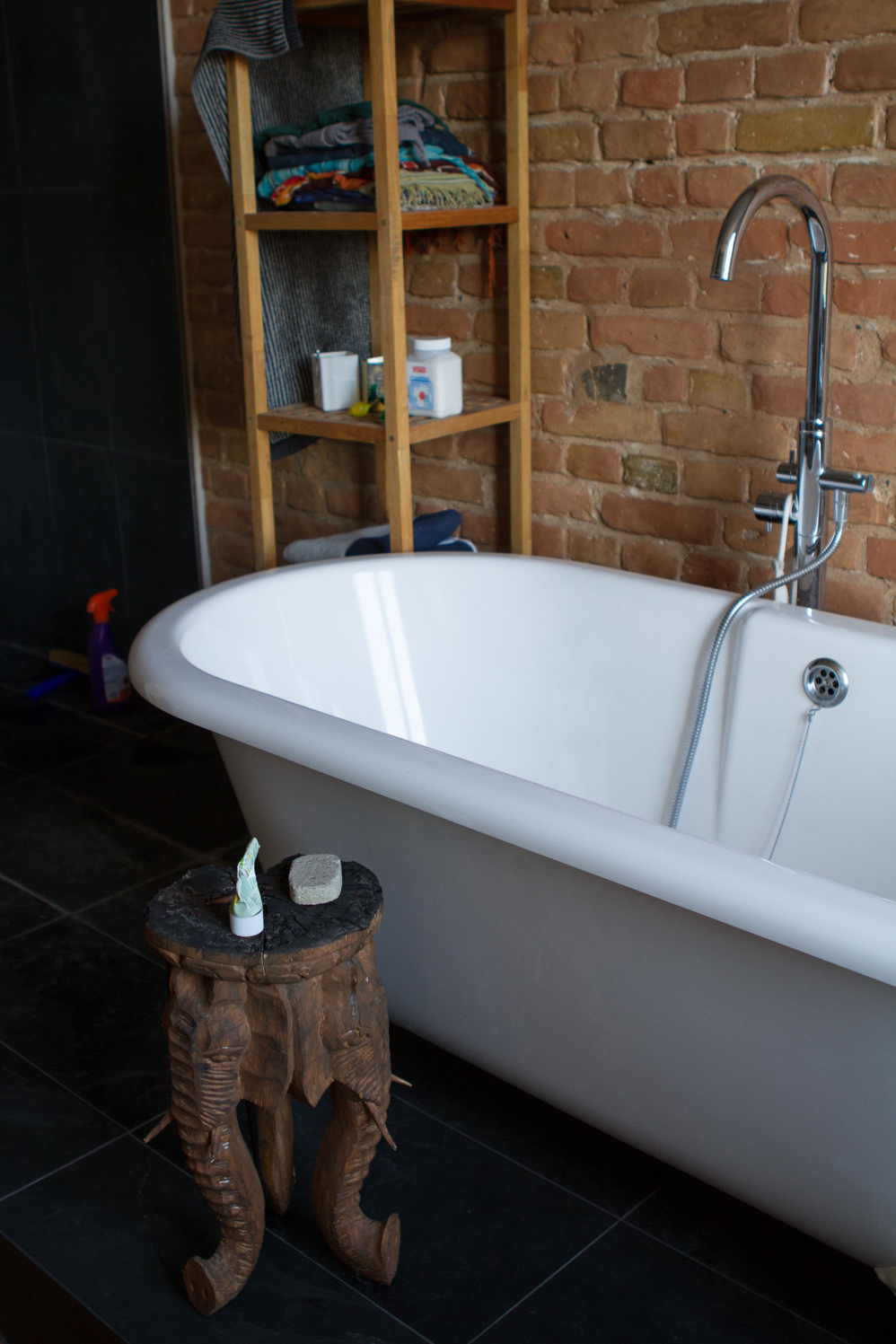
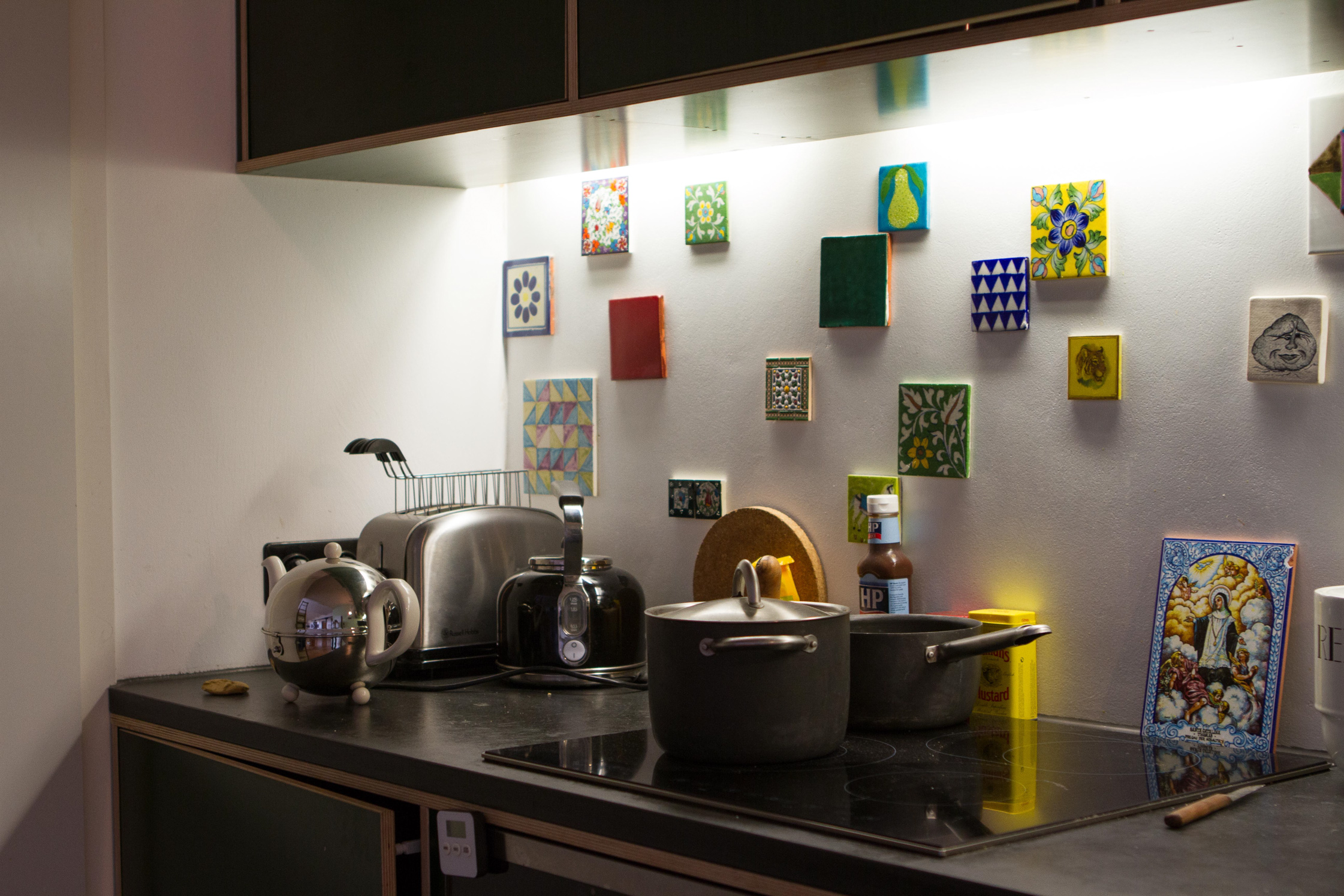
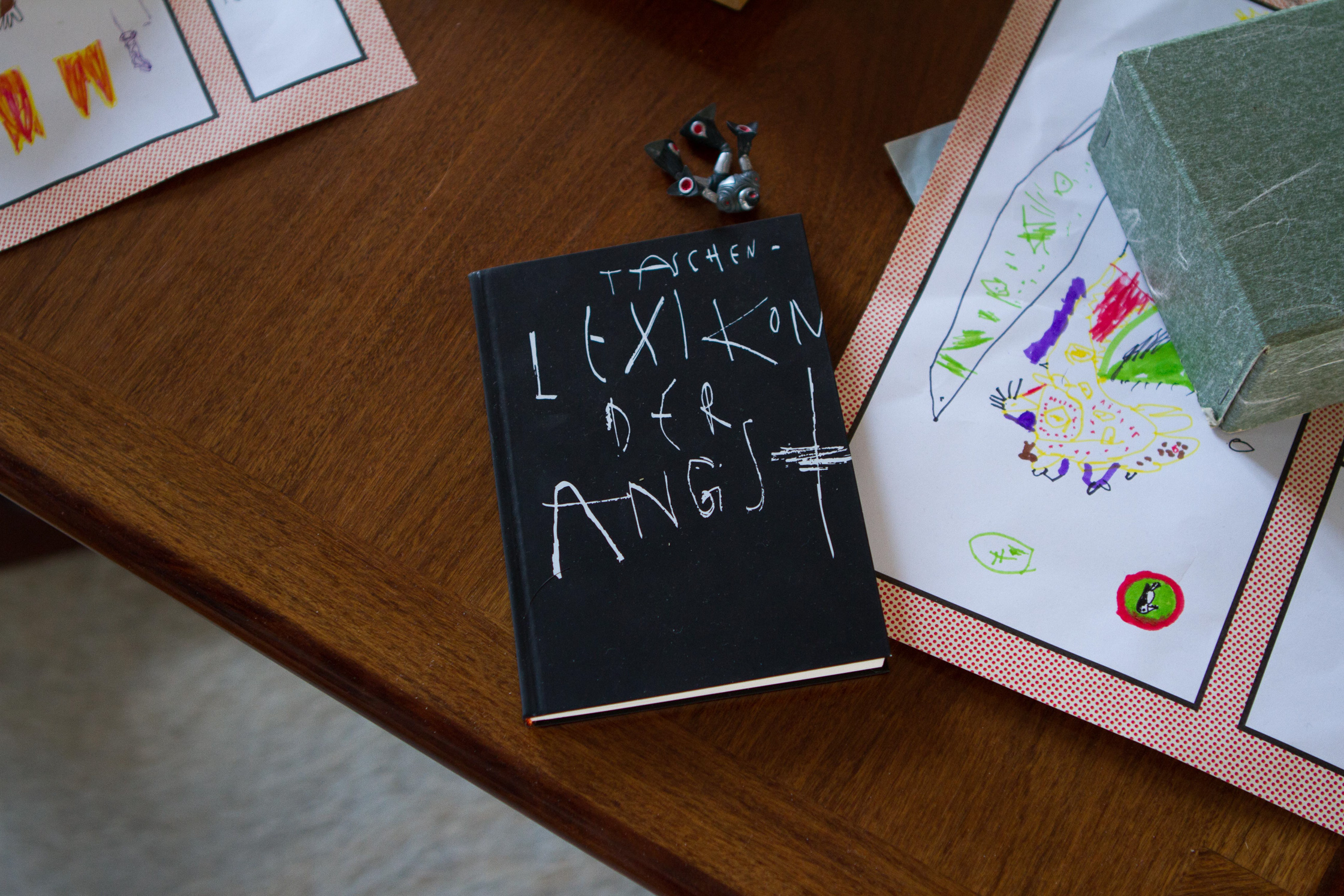
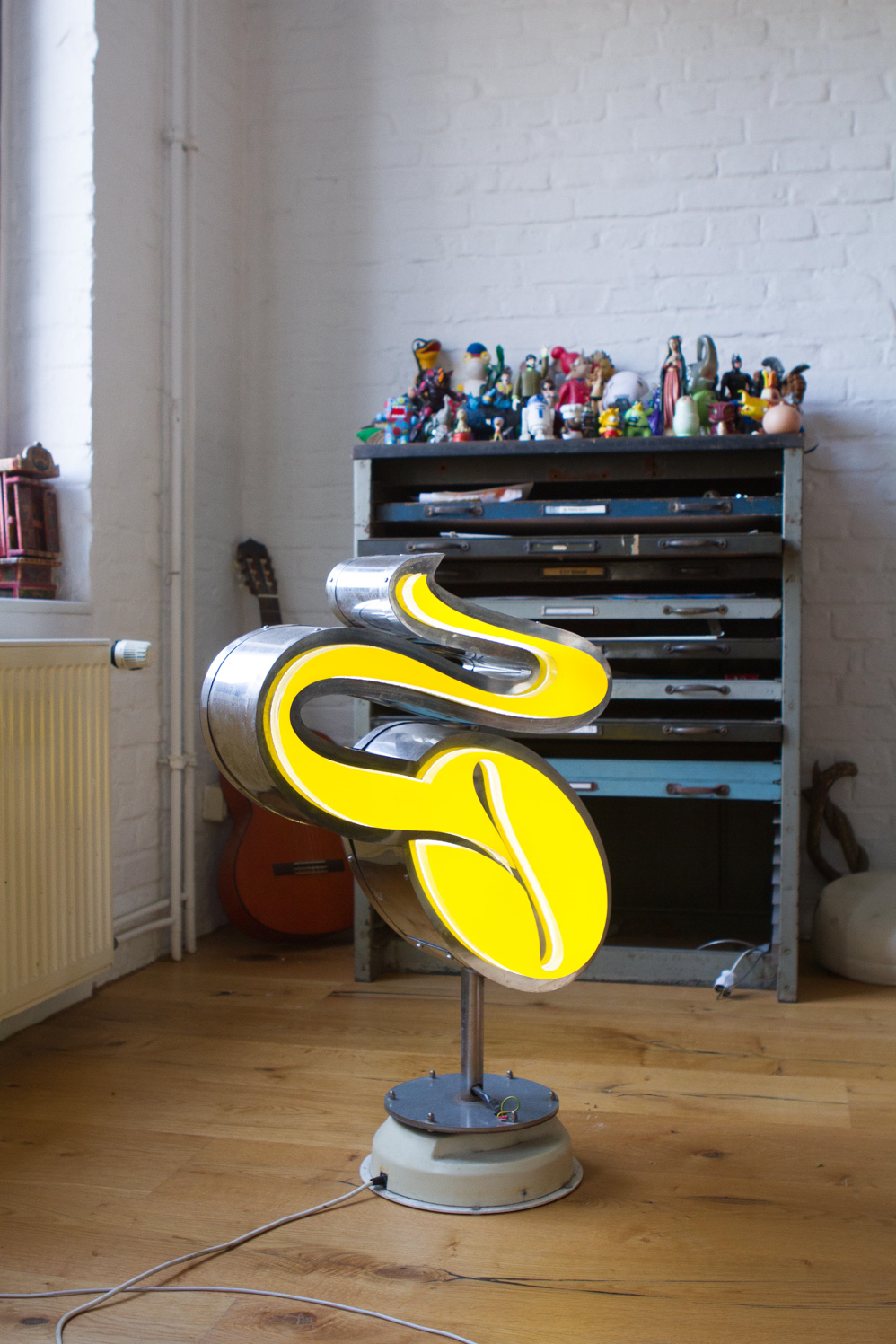
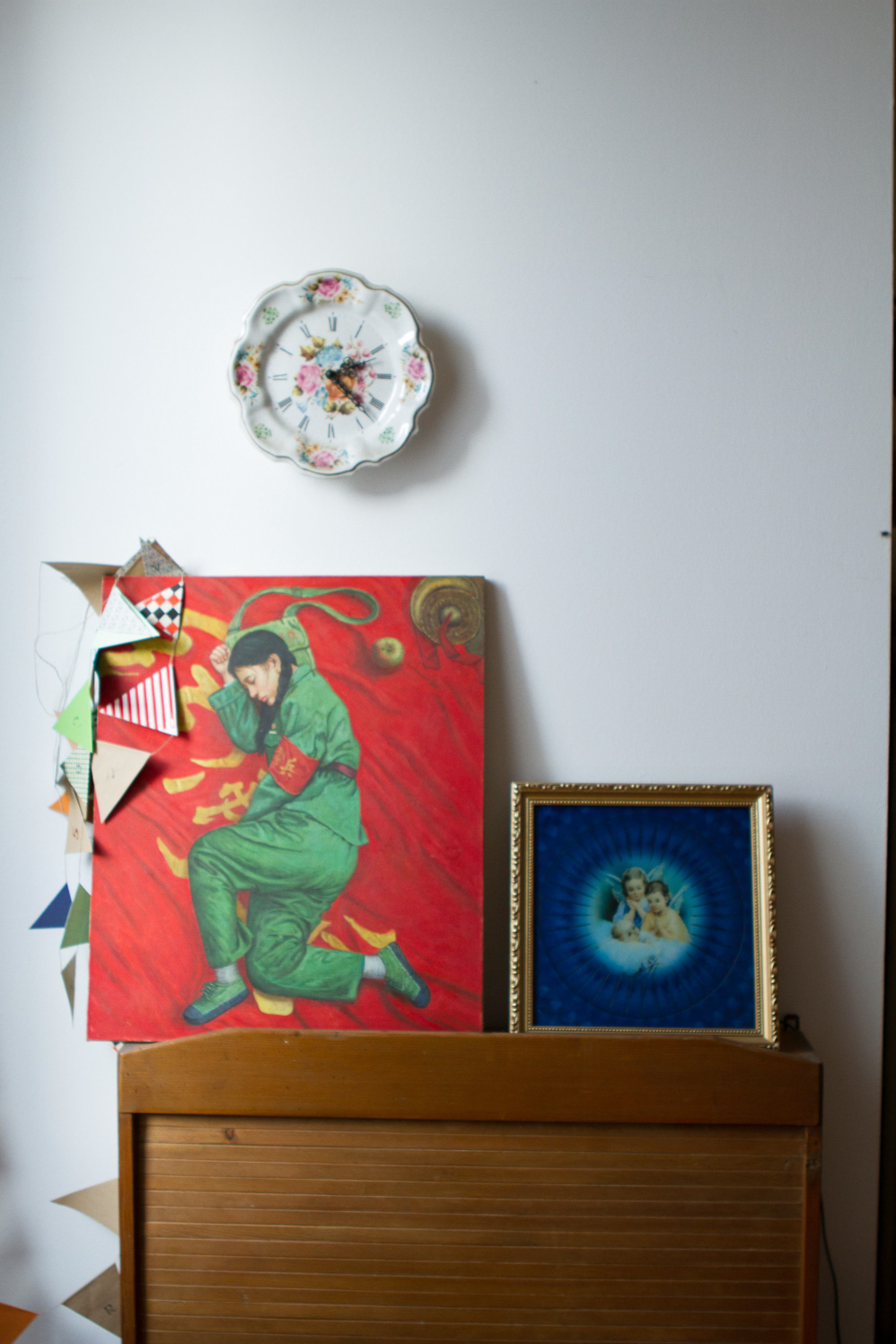
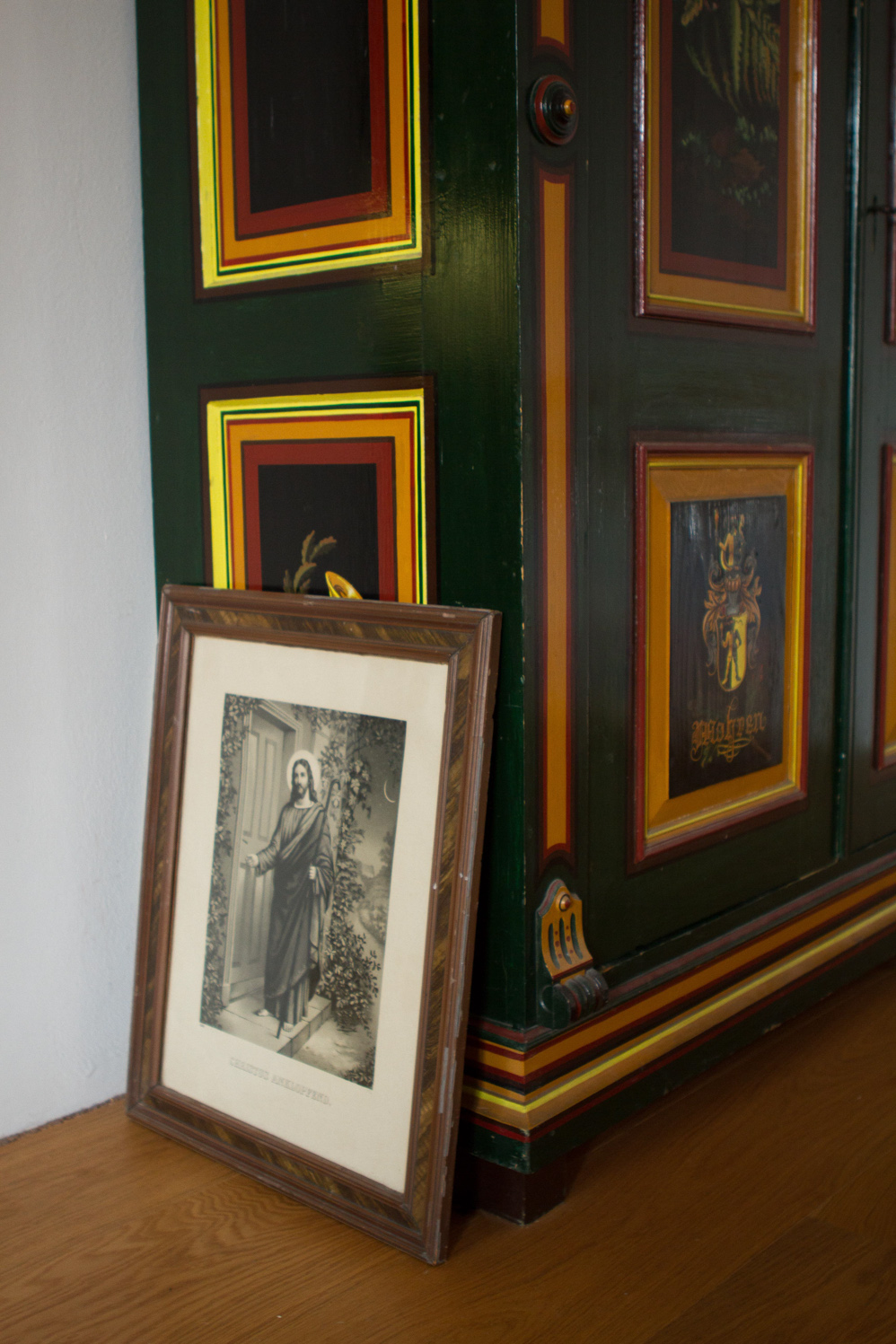
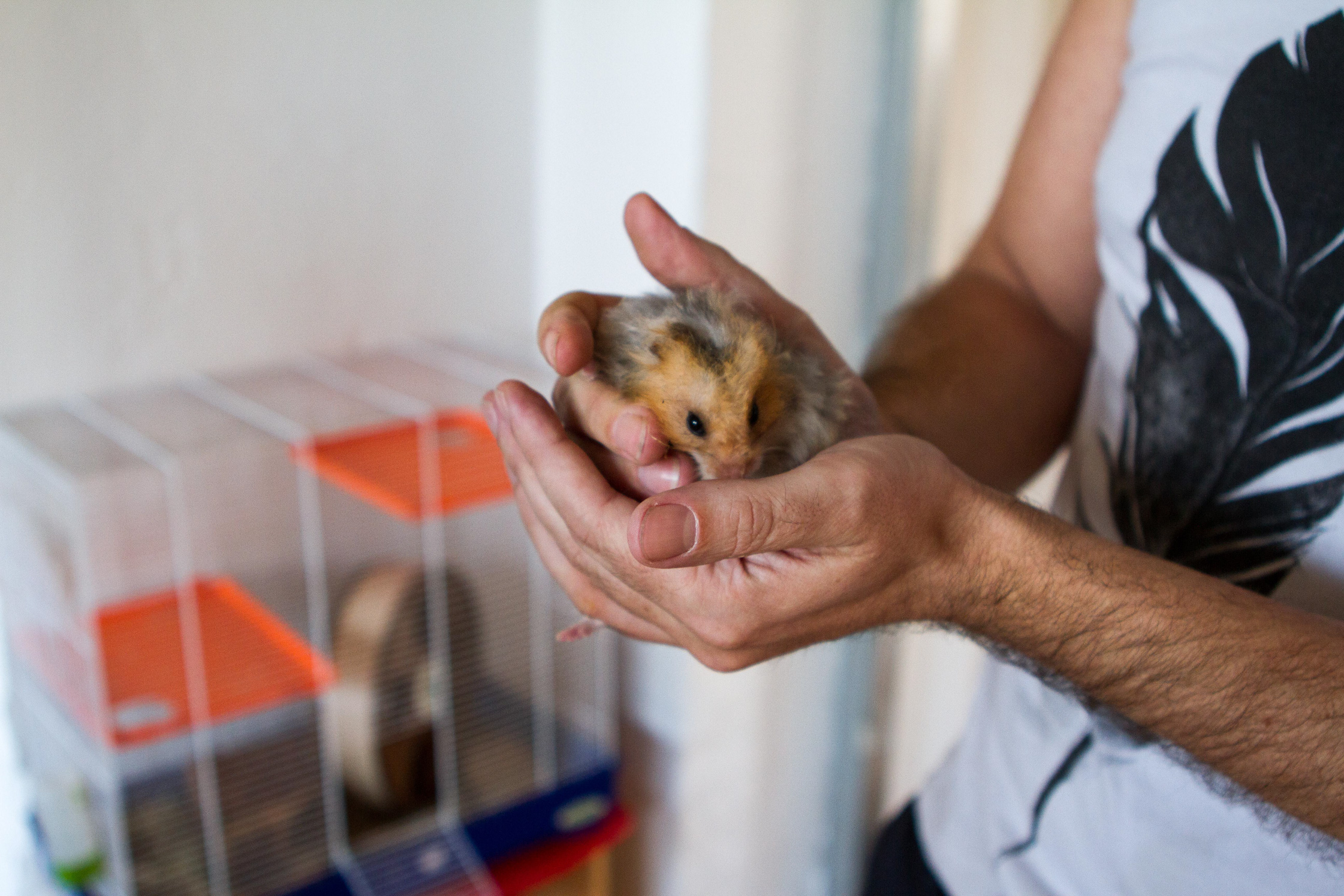
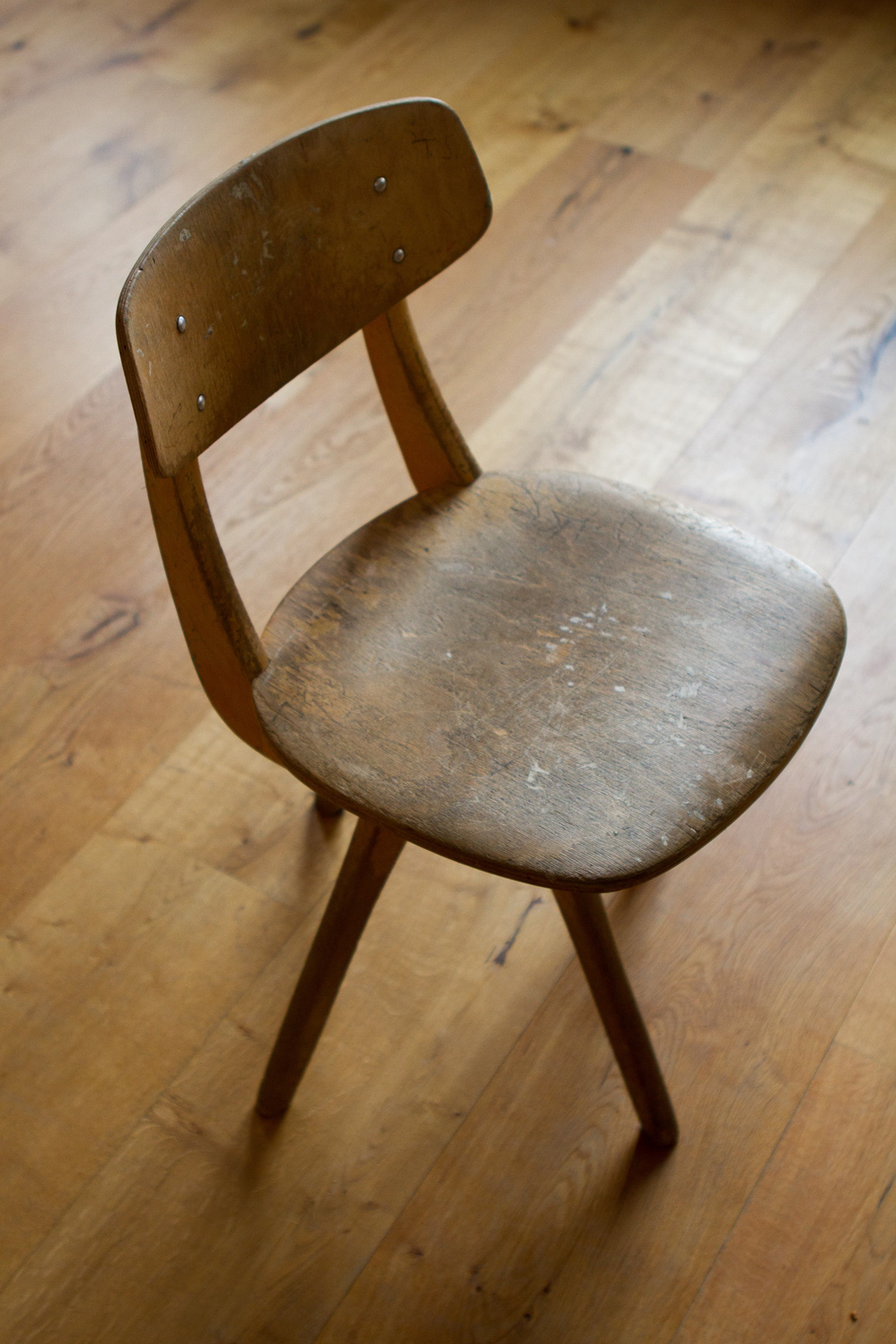
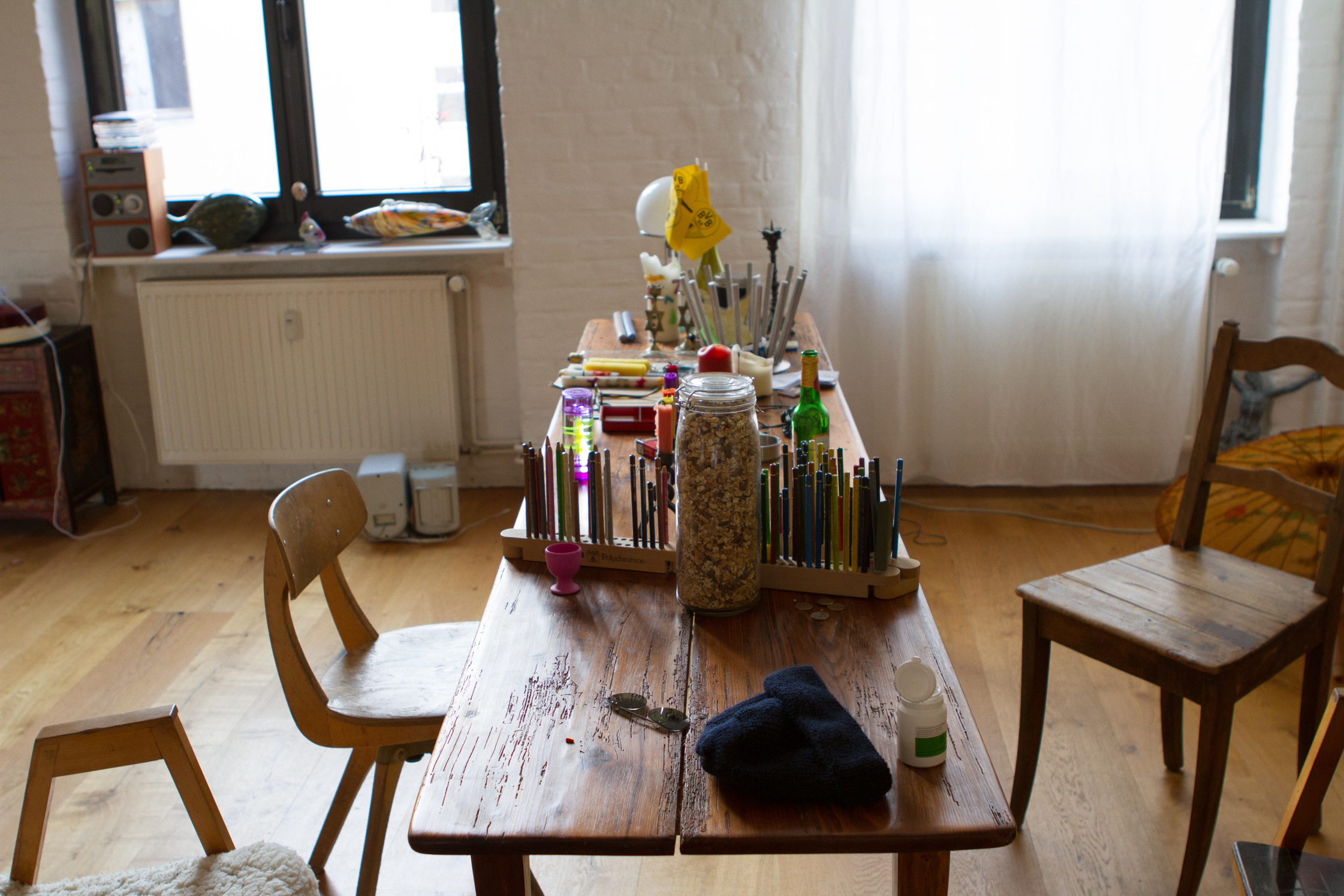
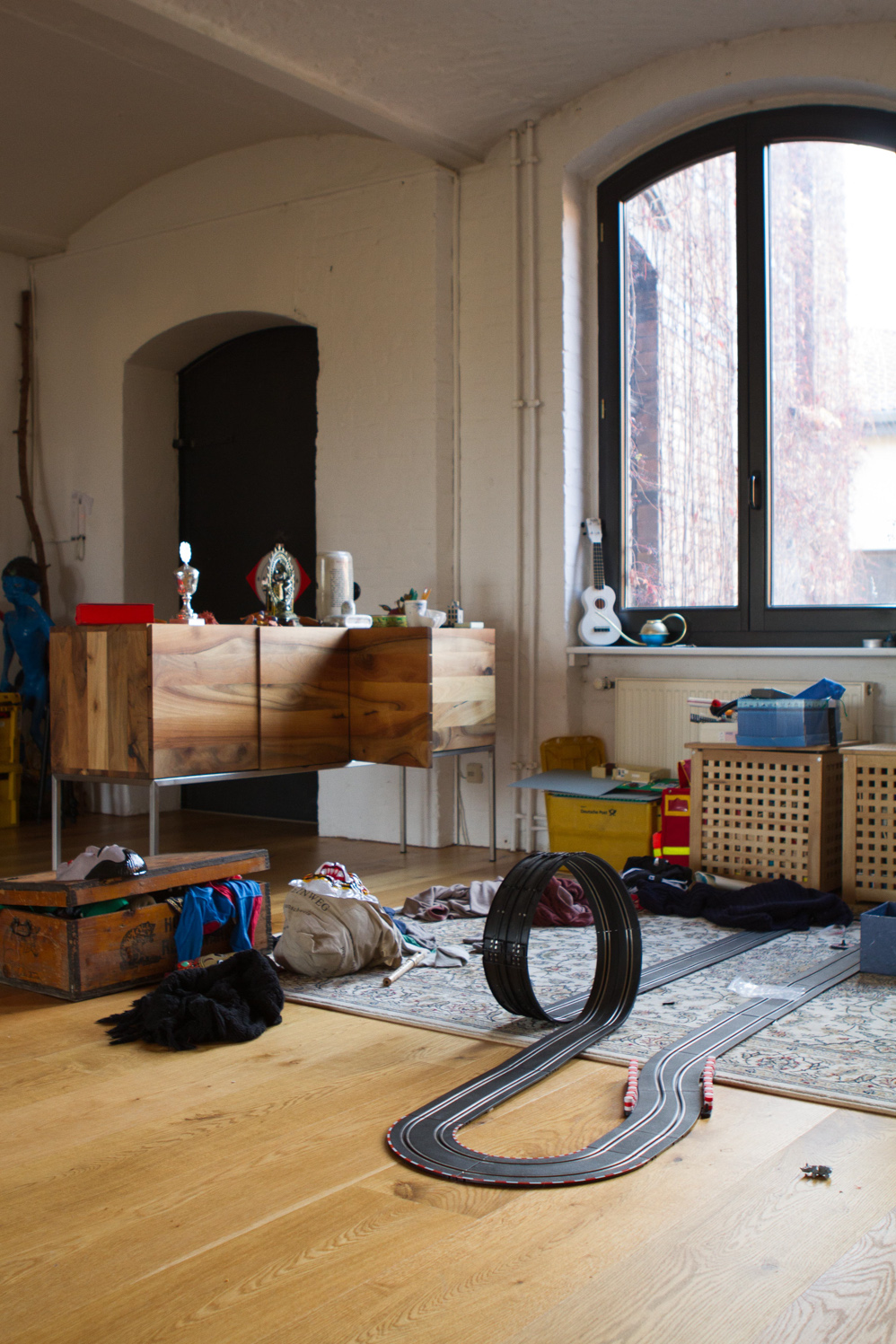
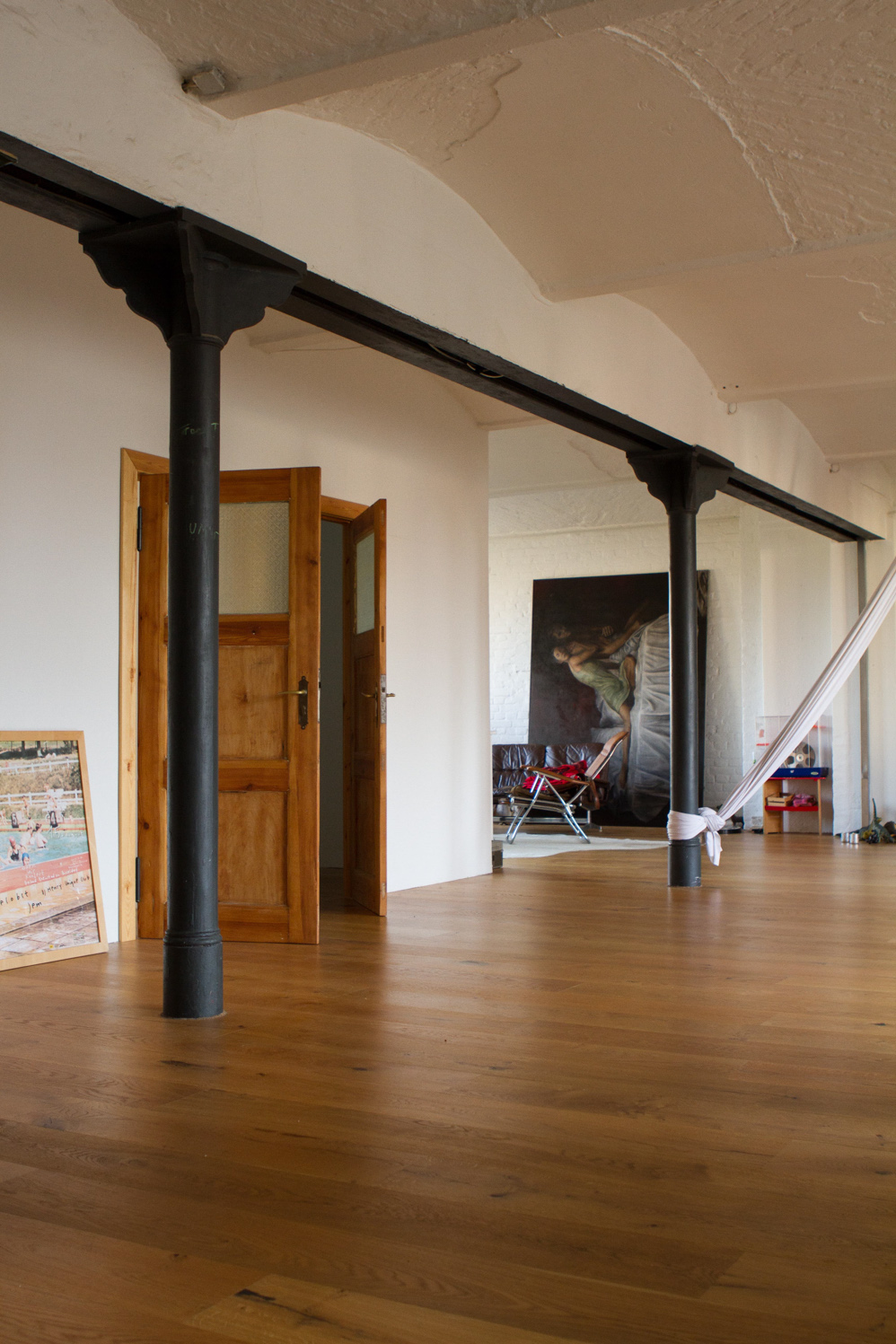
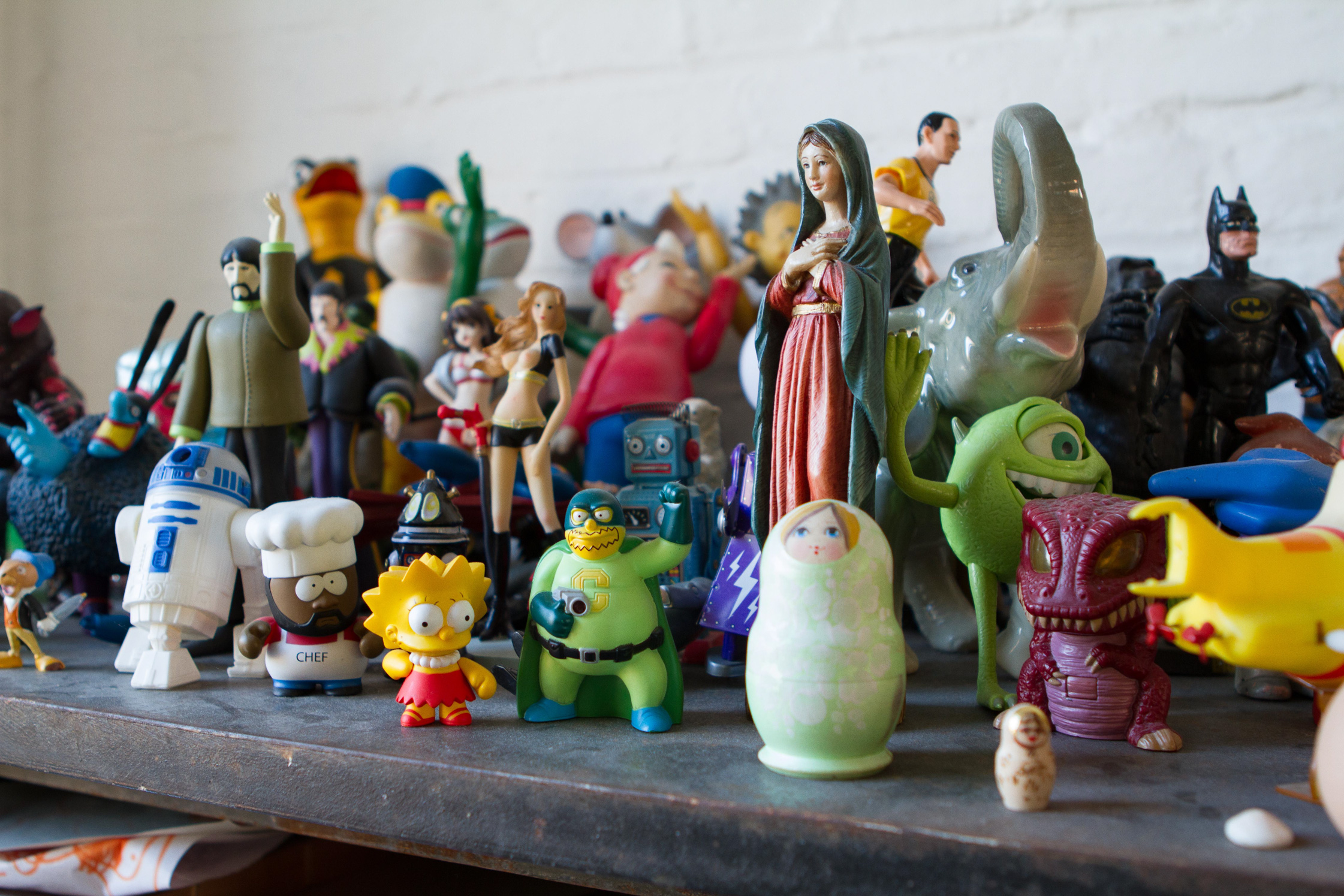
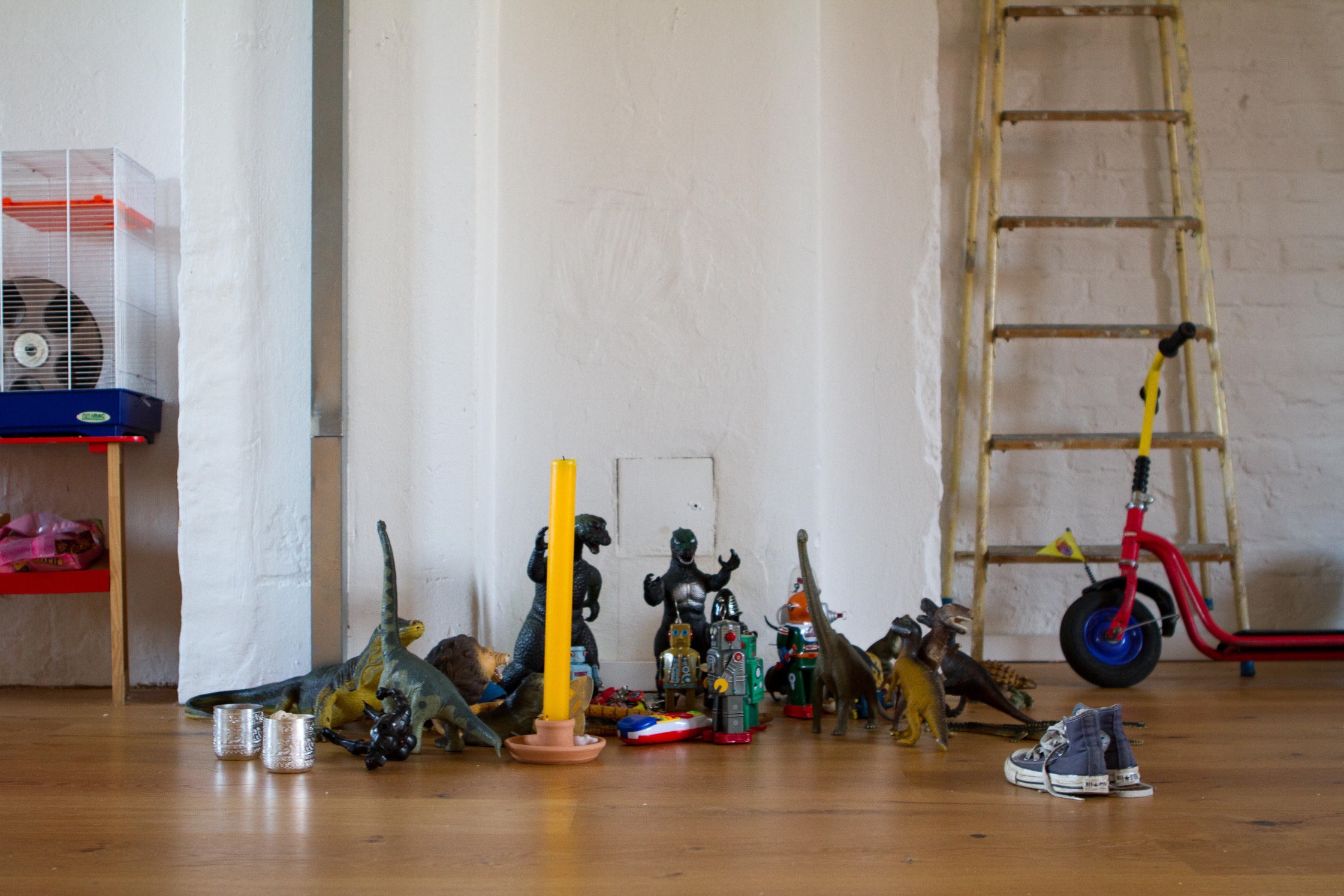
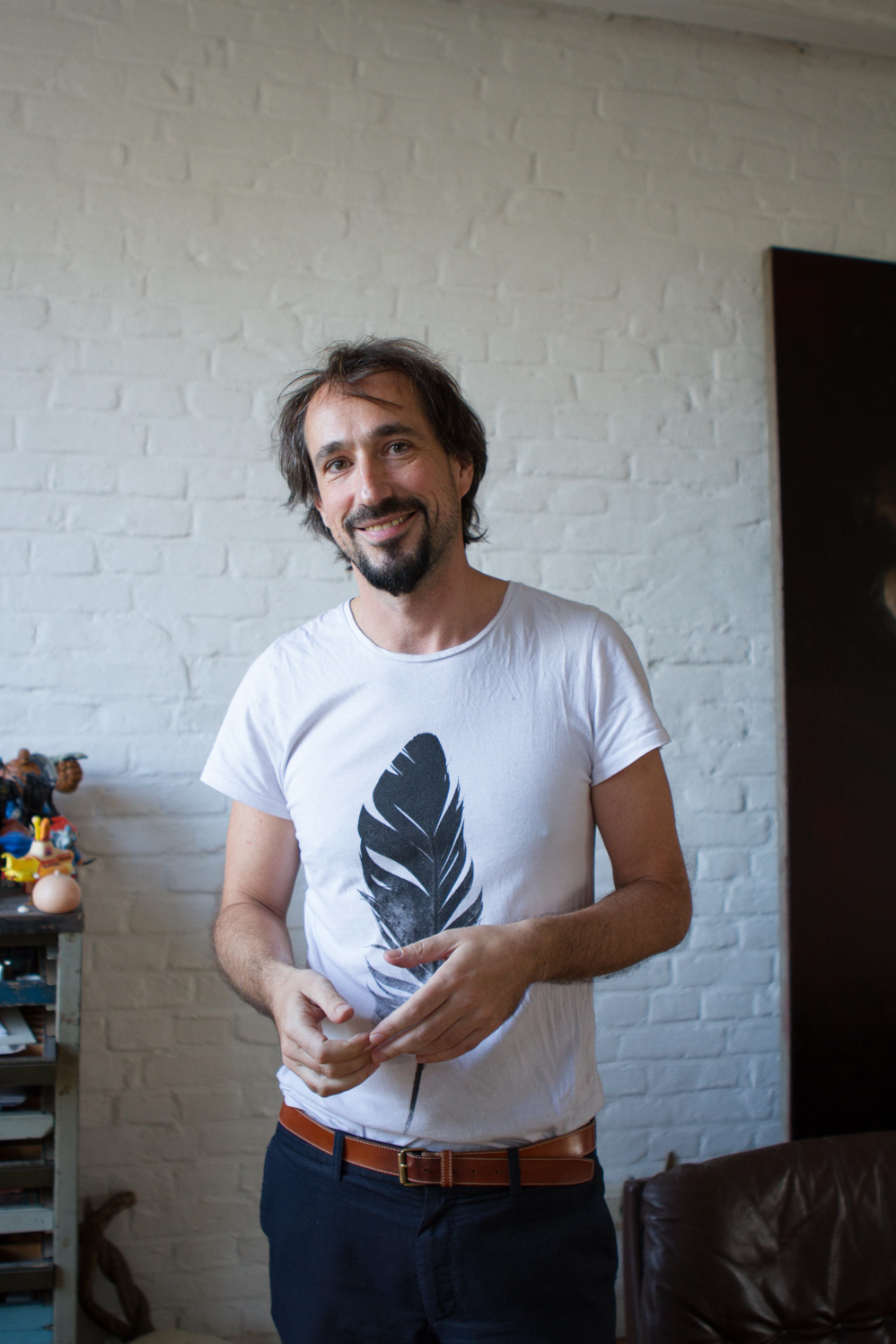
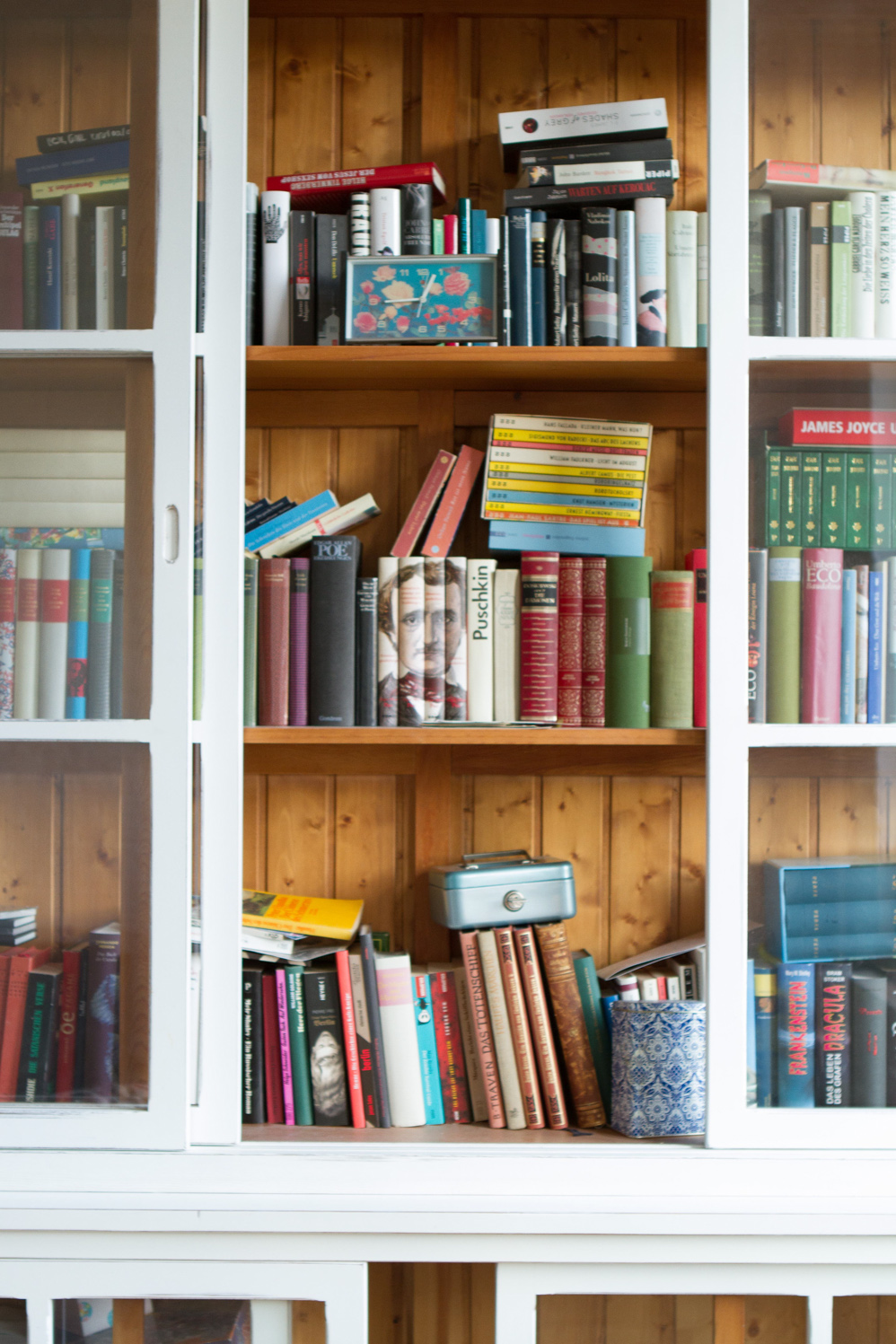
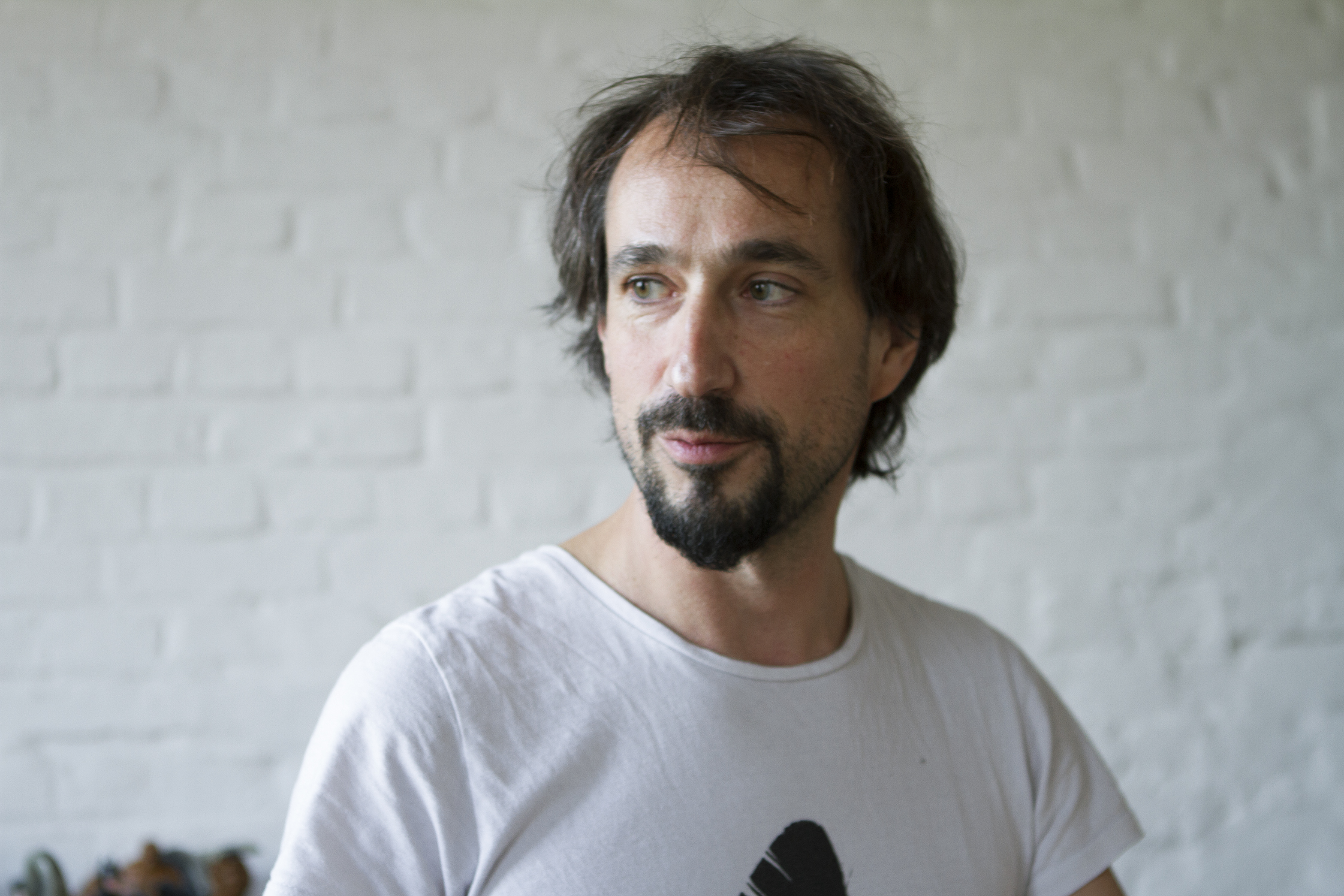
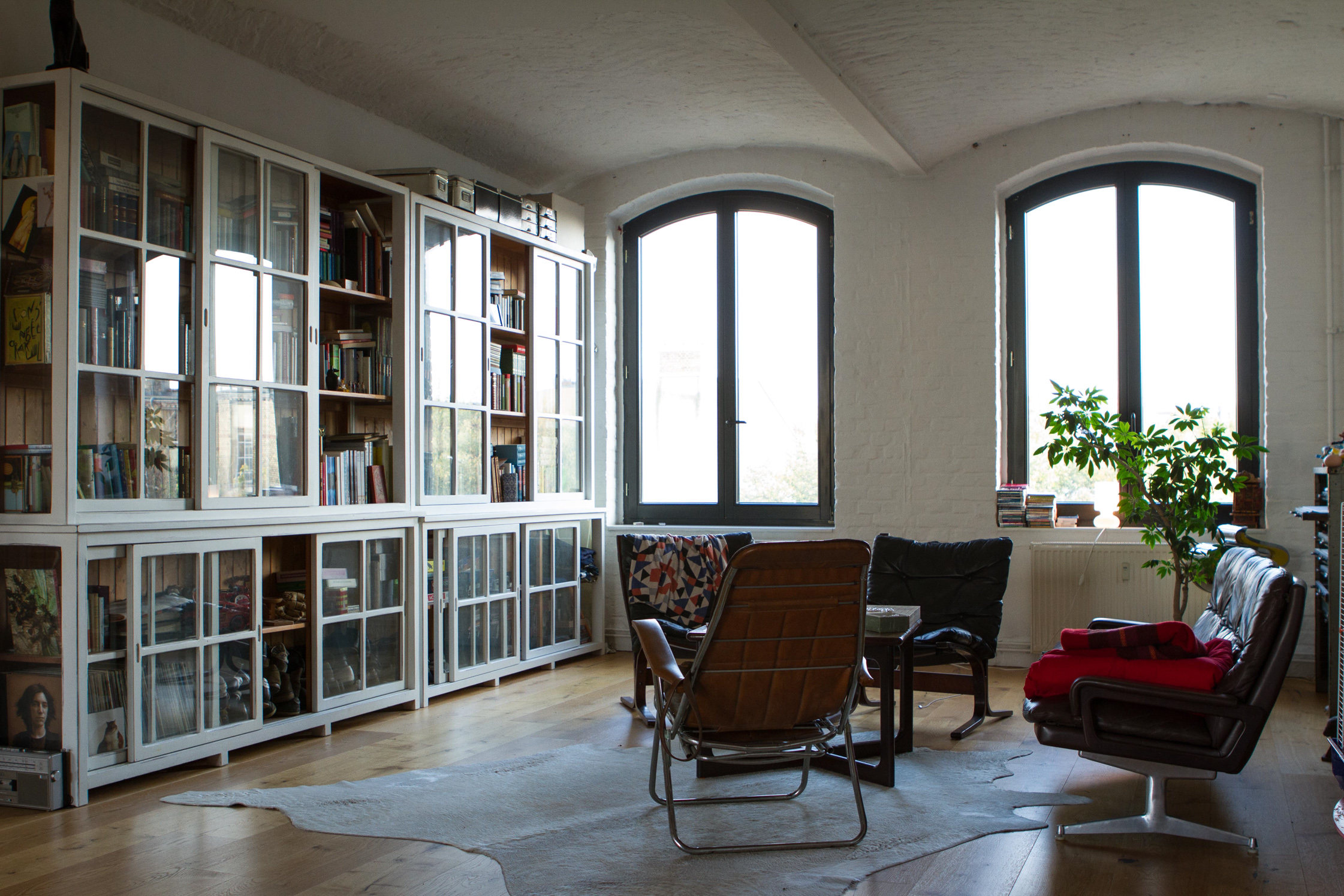
How long have you been living at Mariannenplatz?
I have had my office m23 for twelve years in this house and have lived with my kids here for two years now. Our neighbours are a great mix of people. Above us lives a painter, beneath we have a landscape architect, and there is a a flat share under the roof. Before, and this is an actual true story, a man used to live there with his goat. He would take it down every morning to Mariannenplatz so it could have some grass. During the summer, we also grill on the roof.
What was this building’s prior function?
The atelier used to serve as Turkish mosque. When I visited this building for the first time oriental carpets were hanging everywhere, the walls were panelled with green plastic wood, and the bathrooms only had foot bath basins.
Do you have a favourite piece of furniture or object in your flat?
I really like my action figurines. The salamander figures come from the shoe store of my parents. As a child I used to play with them in the shop windows. My books are also really important to me, both literature and novels. Books change over the years, they live! Even the stories of a book alter, the content always changes. Just like Heraclitus said, one couldn’t step twice into the same river; for the other waters are ever flowing on to you.
Can you tell us about your journey as a designer that turned you into what you are today?
I don’t consider myself as a designer. I also studied philosophy which still influences me today. During my studies I mainly did artistic work, even though I couldn’t truly handle the etiquette of art and design. I did my diploma under a painter, Dieter Glasmacher. This man put an immense amount of life into his teaching. He showed me the true importance of passion in work and that one should be willing to burn for it. In the end the medium of expression didn’t matter – I still don’t know how to paint. However, the work needed to express an idea. Something you feel or something that shows a bridge between heart and brain. I underwent this journey until I understood that design was best for my expression. It was so beautiful to realise that people understood what I did. The idea that design is not something hermetical but should communicate with words and prove its relevance. Of course, Uwe Loesch also influenced me greatly, under whom I studied in Wupperal. Still to this day he is one of the smartest designer celebrities that I know. That’s how I became a designer.
In which moment do you realise that your job as a designer influences your private life?
All the time. I don’t know when the borders between private and professional life intertwined. Perhaps it has something to do with the fact that there are people who live their work and I am just one of them. This influence goes in both directions and I have no idea why.
Tell us about your table tennis passion.
I started playing table tennis during my years at University of Applied Arts of Vienna. There was a table tennis table by the design agency Walking Chair. The net in the middle would spin, which sparked my instinct to play. Just like that we would practice regularly.
Which clients are you favourites?
I really appreciate clients from the cultural and social sector. Semperoper, theatre festivals, music labels, Amnesty International… it is a great gain to work with cultured people who respect and understand what we do. It was a hard road to be where we are now, to be able to choose who we want to work for. But the work was worth it and continues to be. Working with equally respected clients means that both sides will profit, be feared, and will learn from each other. For me it is very important to work with people I like. This is a good idea: never work with assholes.
So you are a AFC – Asshole Free Company?
I never heard that expression – is that a standard term?
I recently learned that at a talk with Michael Politzer in Hamburg.
It certainly makes sense. One wants to work with people who it also would be great to get a beer with and who are able converse about other things than work. One needs to work with people who will bring along life and have something to say, and who don’t pretend that life is just a paroxysm of joy lacking any kind of problems. I am interested in those who have experienced ups and downs and are able to admit to them.
I was always good at combining sport and work, which also led to the eventual act of playing soccer in the lecture hall. It started with a handful of students, a softball on two tables as goals. At the end, an event with the entire university and half of Vienna came into existence. Every summer I organised a soccer tournament which would last an entire day.
How and when did you come to Berlin?
It was 2000. I studied in Düsseldorf, then I received an invitation to be a guest professor in Dortmund, I was accepted for an lectureship in Essen, and then I essentially went to Vienna for art. Back then, I was 32 years old. I was naive and went in a relaxed sport-outfit to the interview. I had no idea what it would mean to study at one of the best schools in Europe. When the kids arrived, it became too exhausting to fly back and forth. That constant AC on planes, the dry air – that is pure hell. Nowadays I hate flying. So I decided to fully concentrate on Berlin and go to UdK.
What does it mean to you to pass on knowledge?
I love to teach, something I have started at an early age – I have been a professor for twelve years and before that I had lectureships. So I never really left university and my teachings have taken me around the world.
The teacher is the one who speaks, it doesn’t matter who has the word at that moment – that was my philosophy. We all sit in a circle and everybody is equal. Every week everybody informs each other which later on will be talked and discussed about. I present these rounds and give impulses. Here, my experience is a great help as I continue working as designer while teaching.
I also receive a lot of input and realise the students’ concerns and needs. Design is a process that doesn’t know how to stand still. Next to music, design is the most direct contemporary form of expression.
What do you appreciate nowadays in Berlin?
People not only come here to work but to manifest themselves. There is work in Berlin, but the pay is miserable and the creative scene hinders itself. So there must be something else that makes Berlin so attractive. I think there is great space for tolerance in regards to choices that won’t be judged. Berlin offers the freedom to be how you want to be.
Thank you Fons for sharing insights into your life and working philosophy.
You find a complete overview on all recent projects on Fons’ agency website m23 here.
This portrait is part of our ongoing collaboration with ZEIT Online who present a special curation of our pictures on their site. Have a look here.
Photography: Luke Abiol
Text: Sarah Weinknecht
Interview: Frederik Frede
